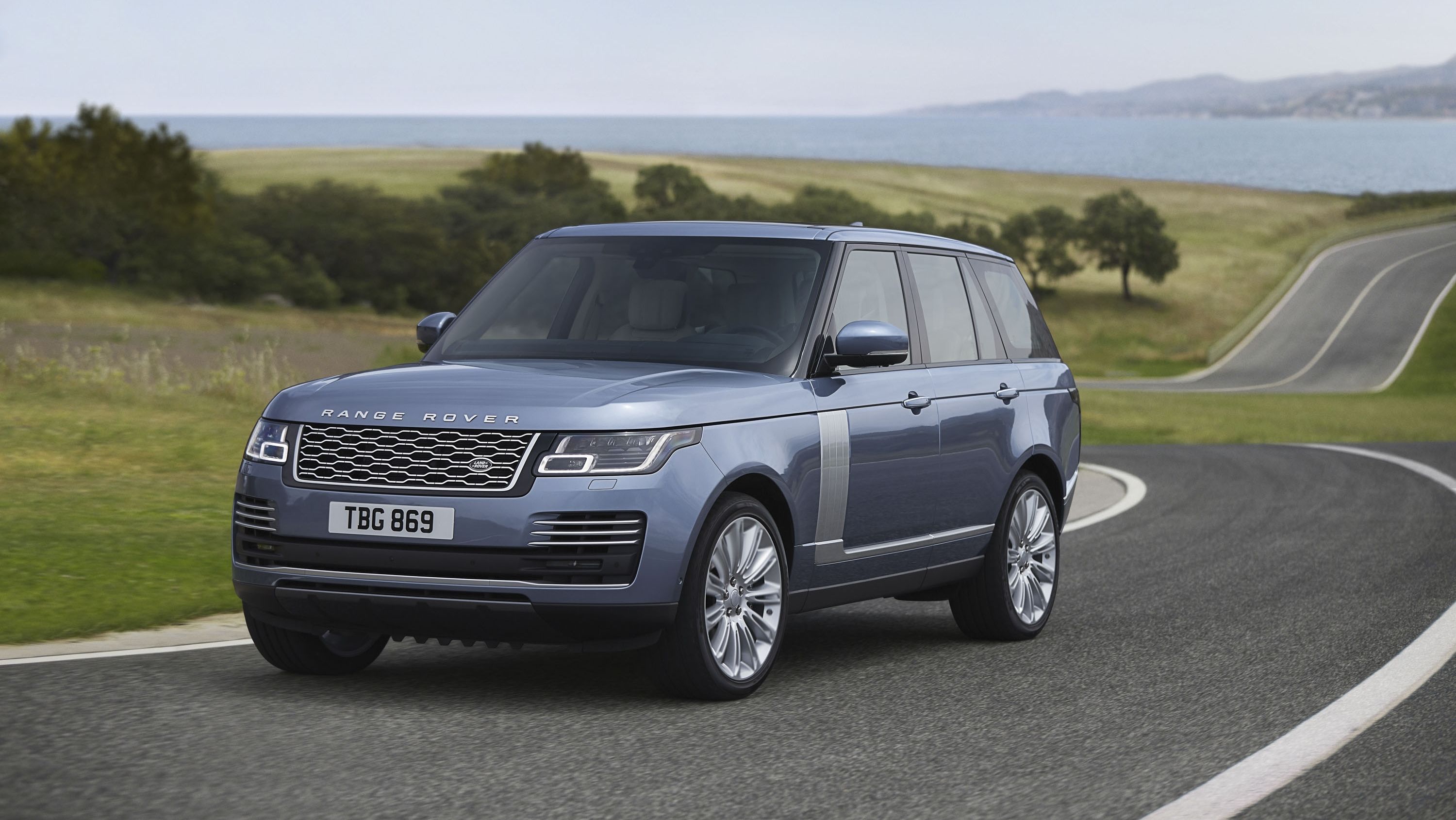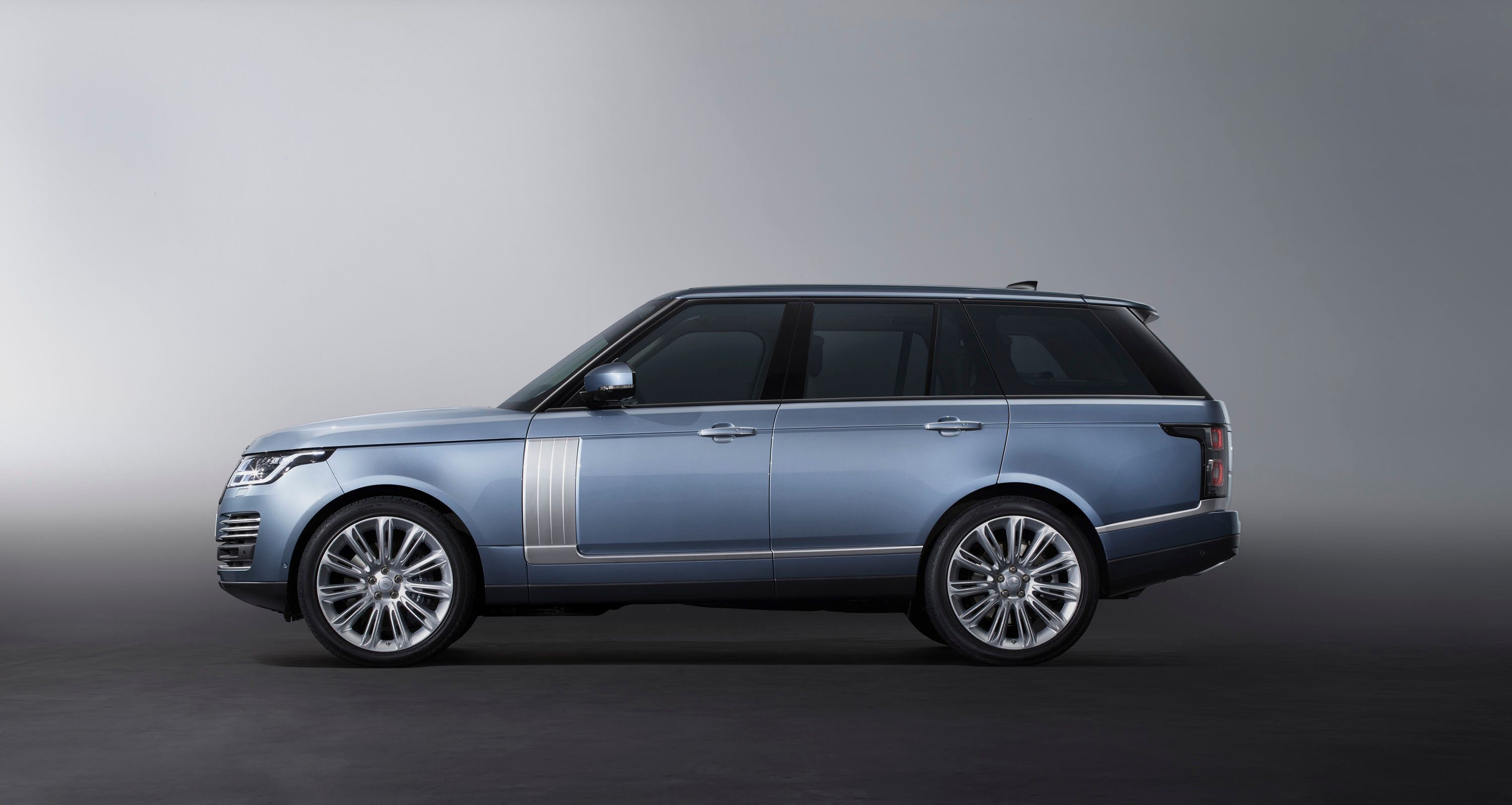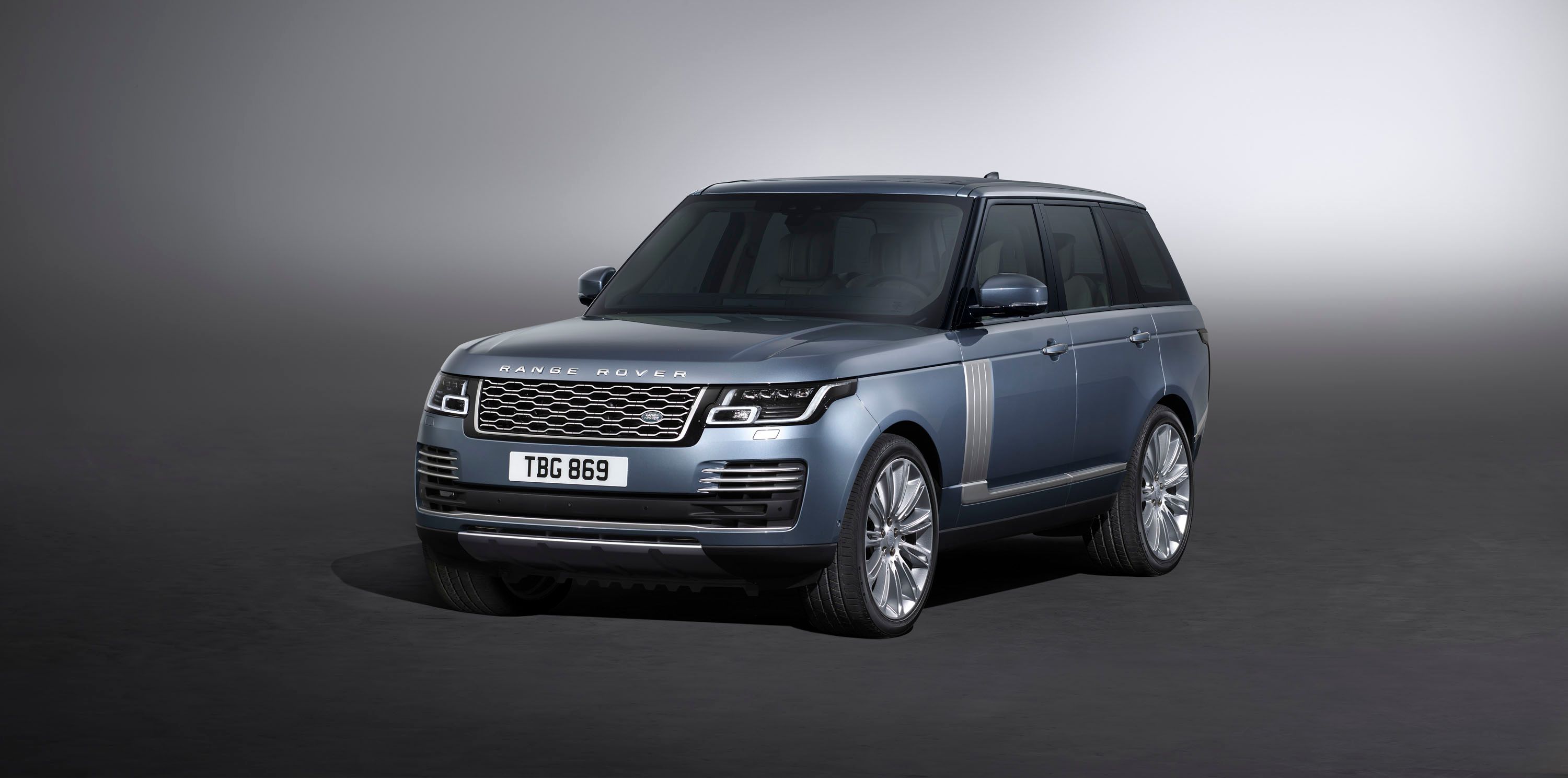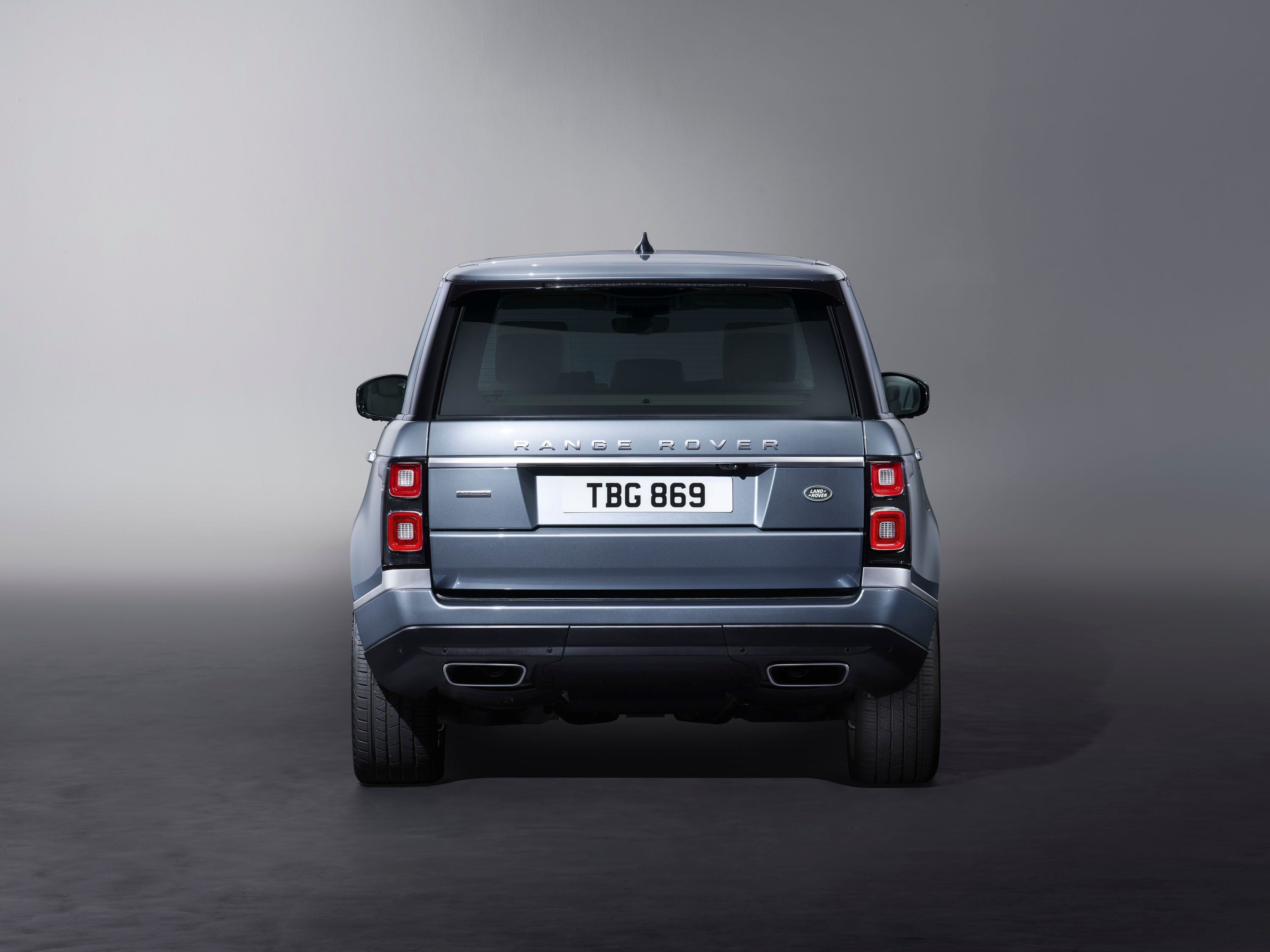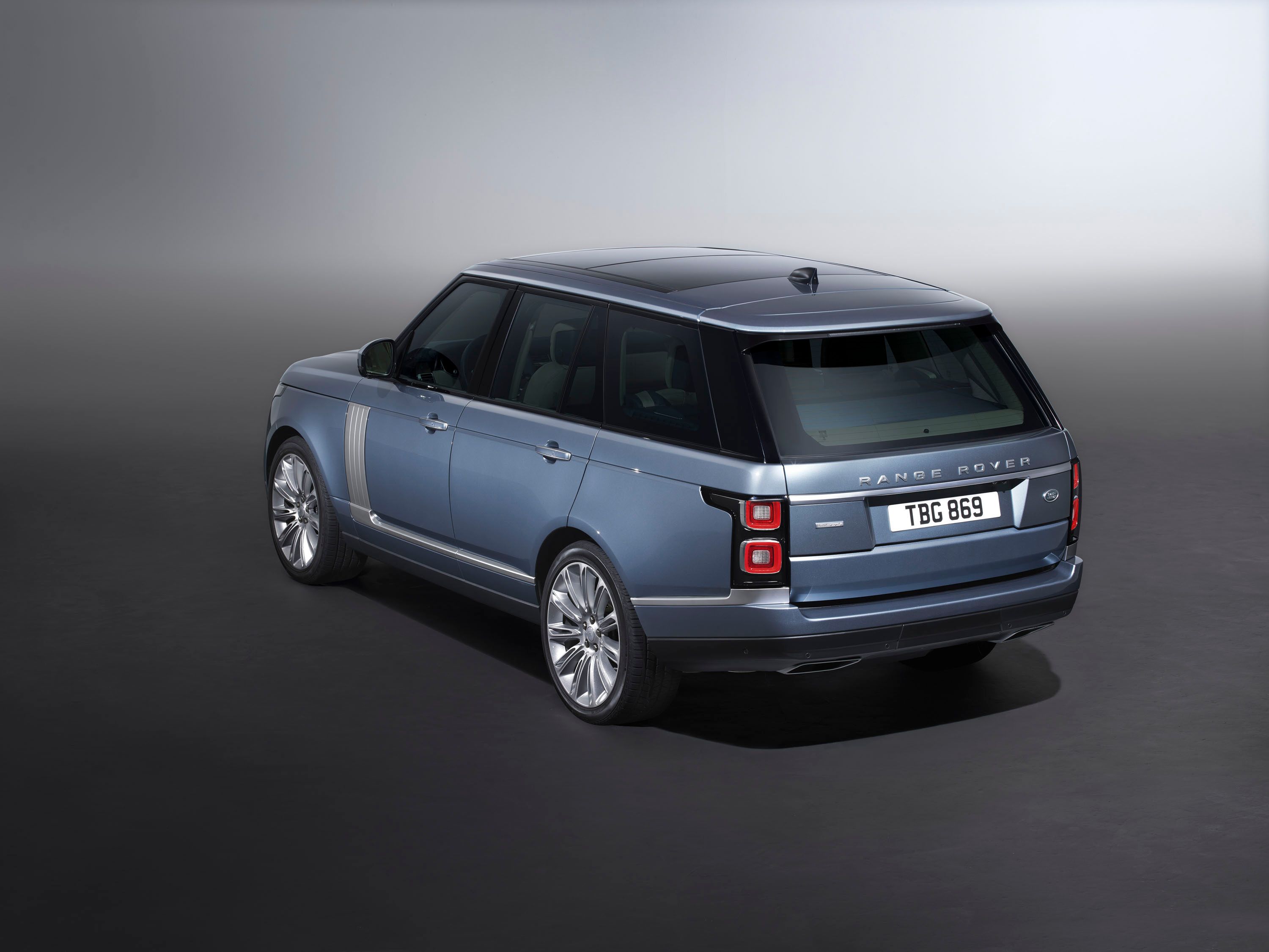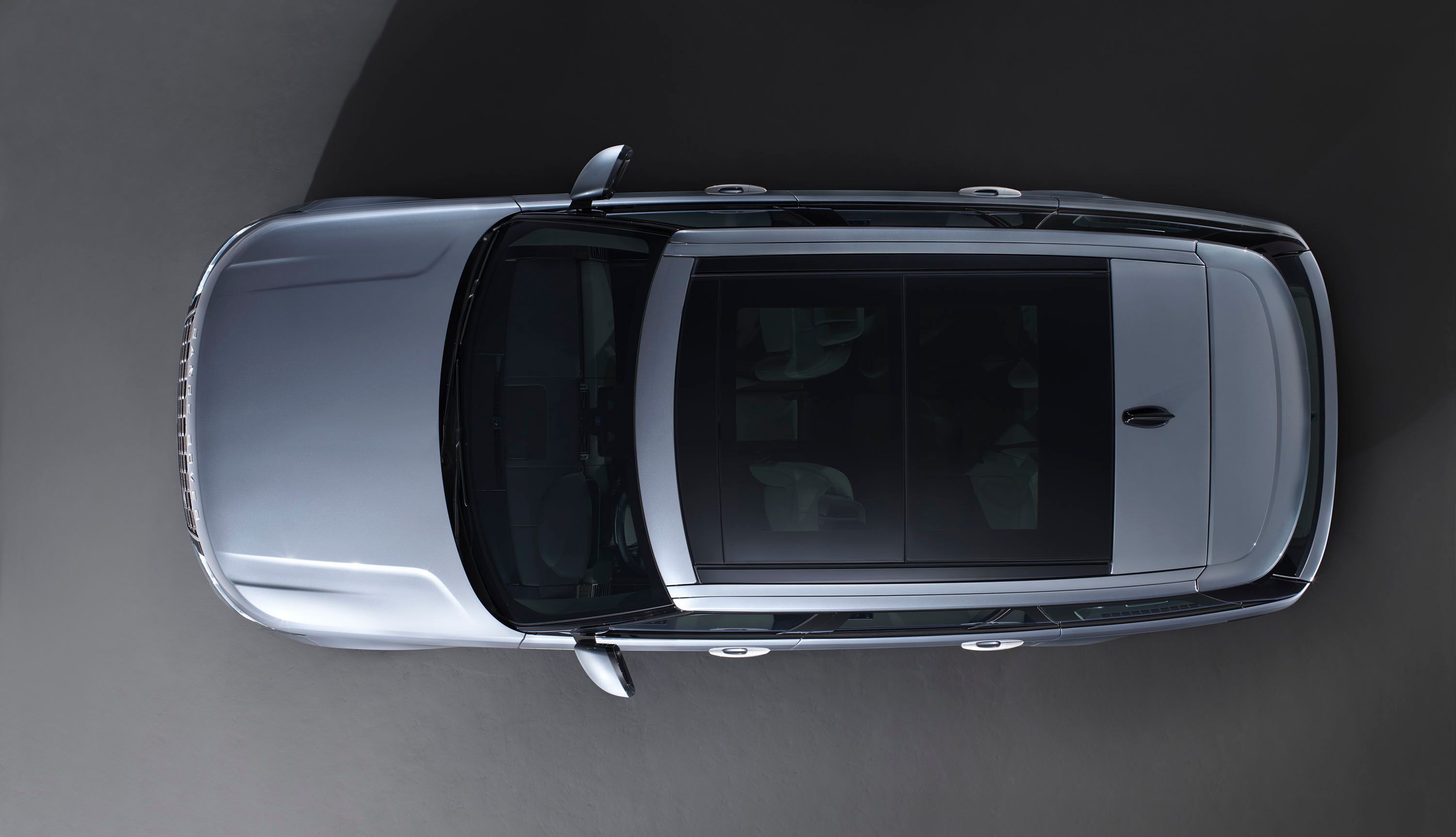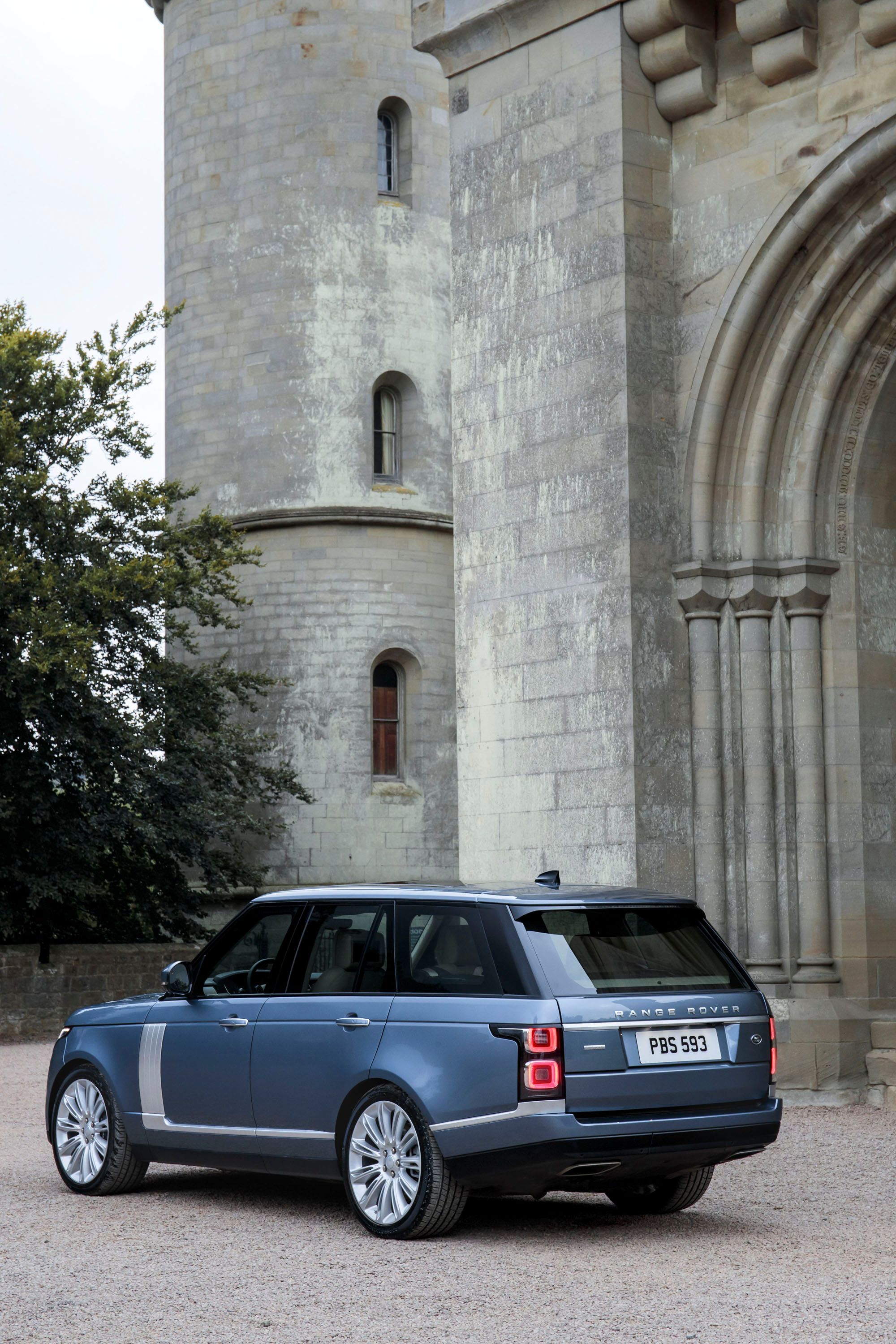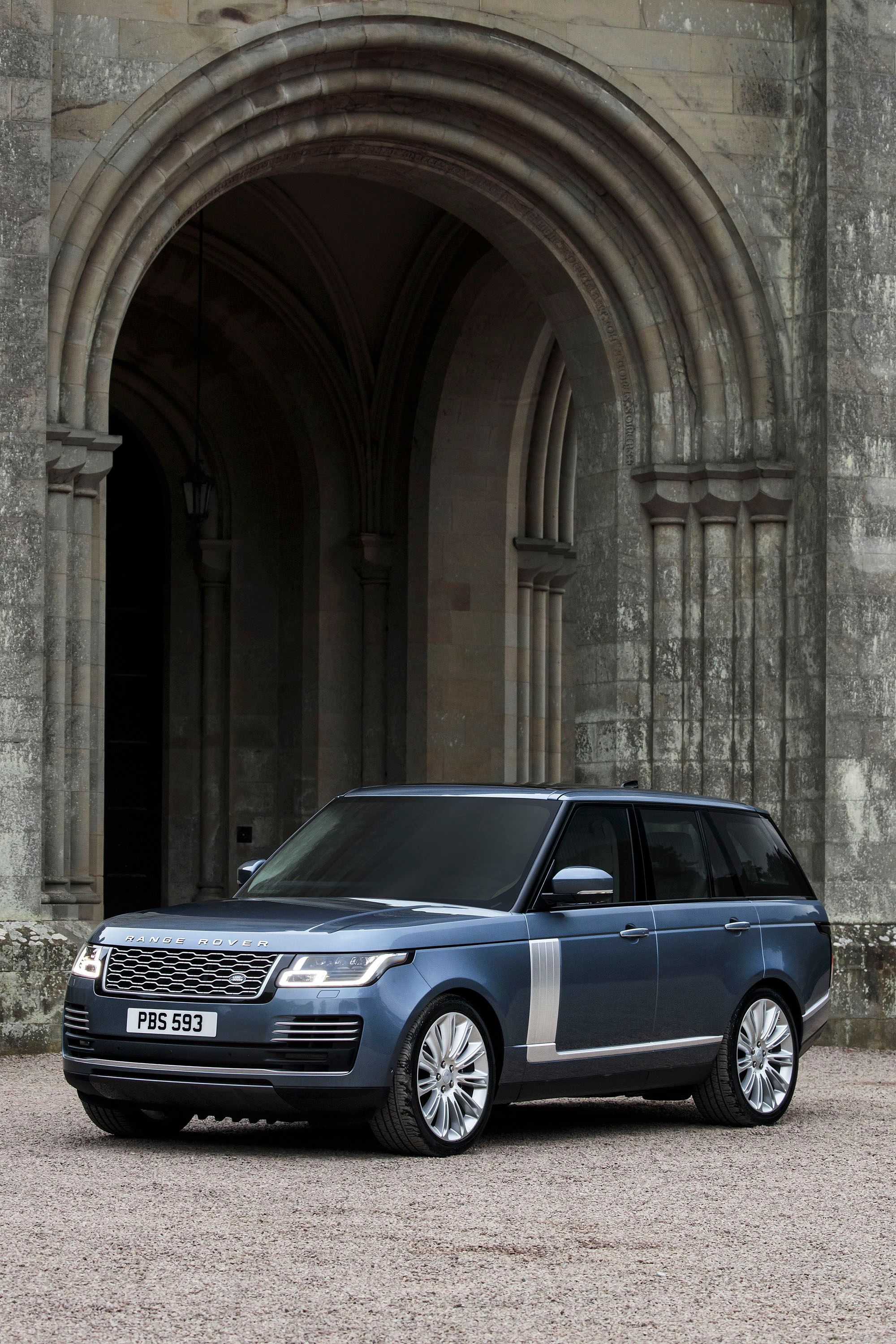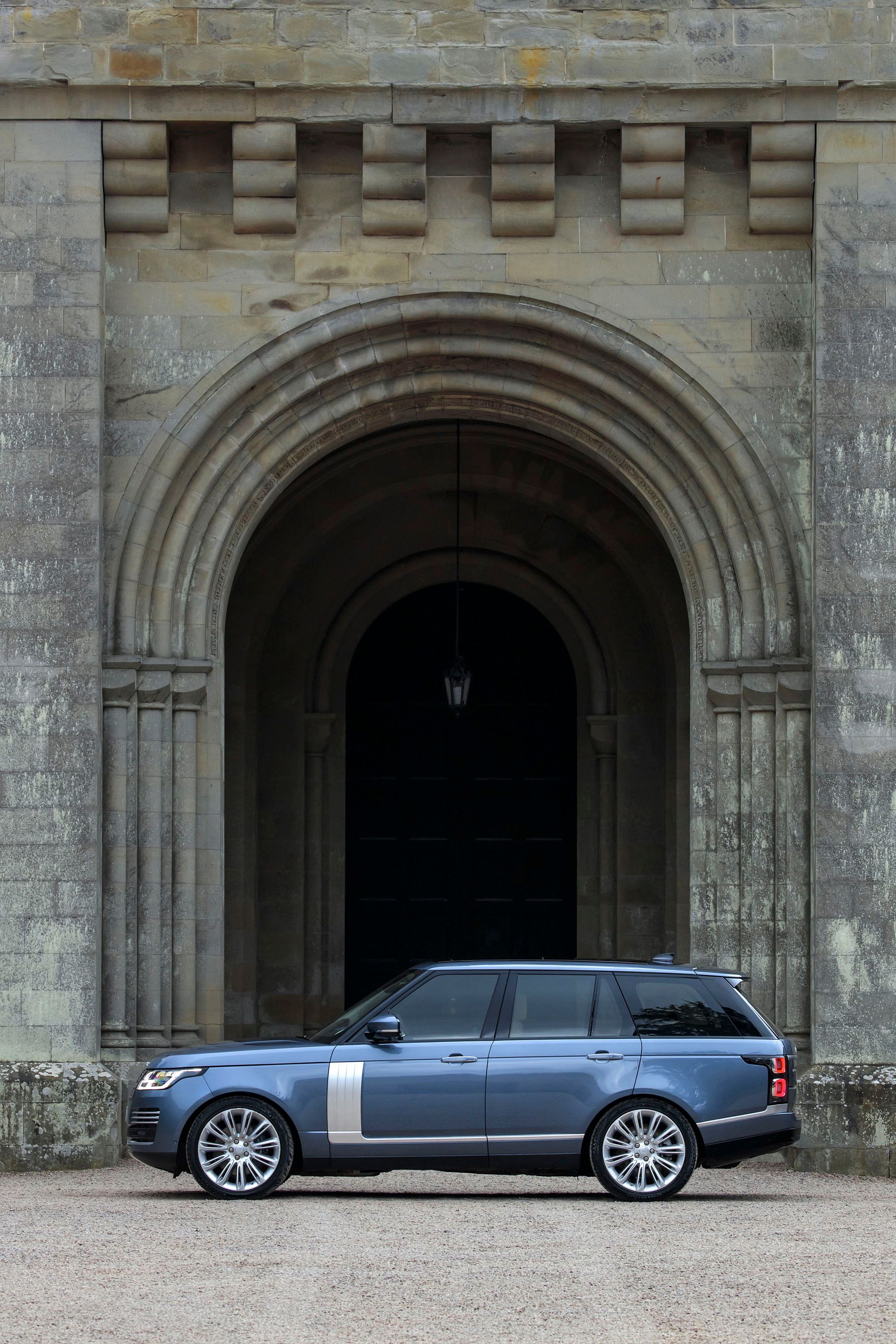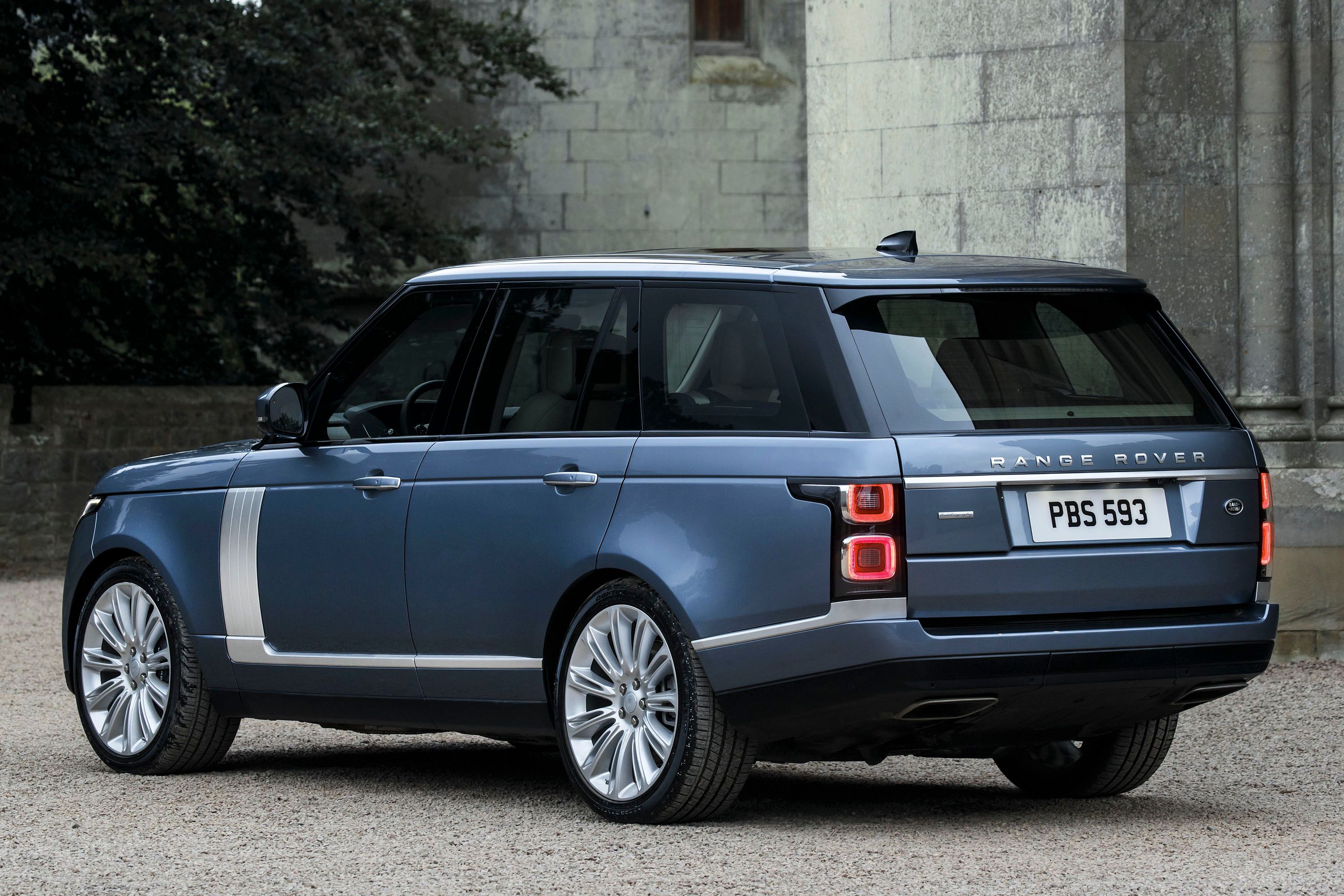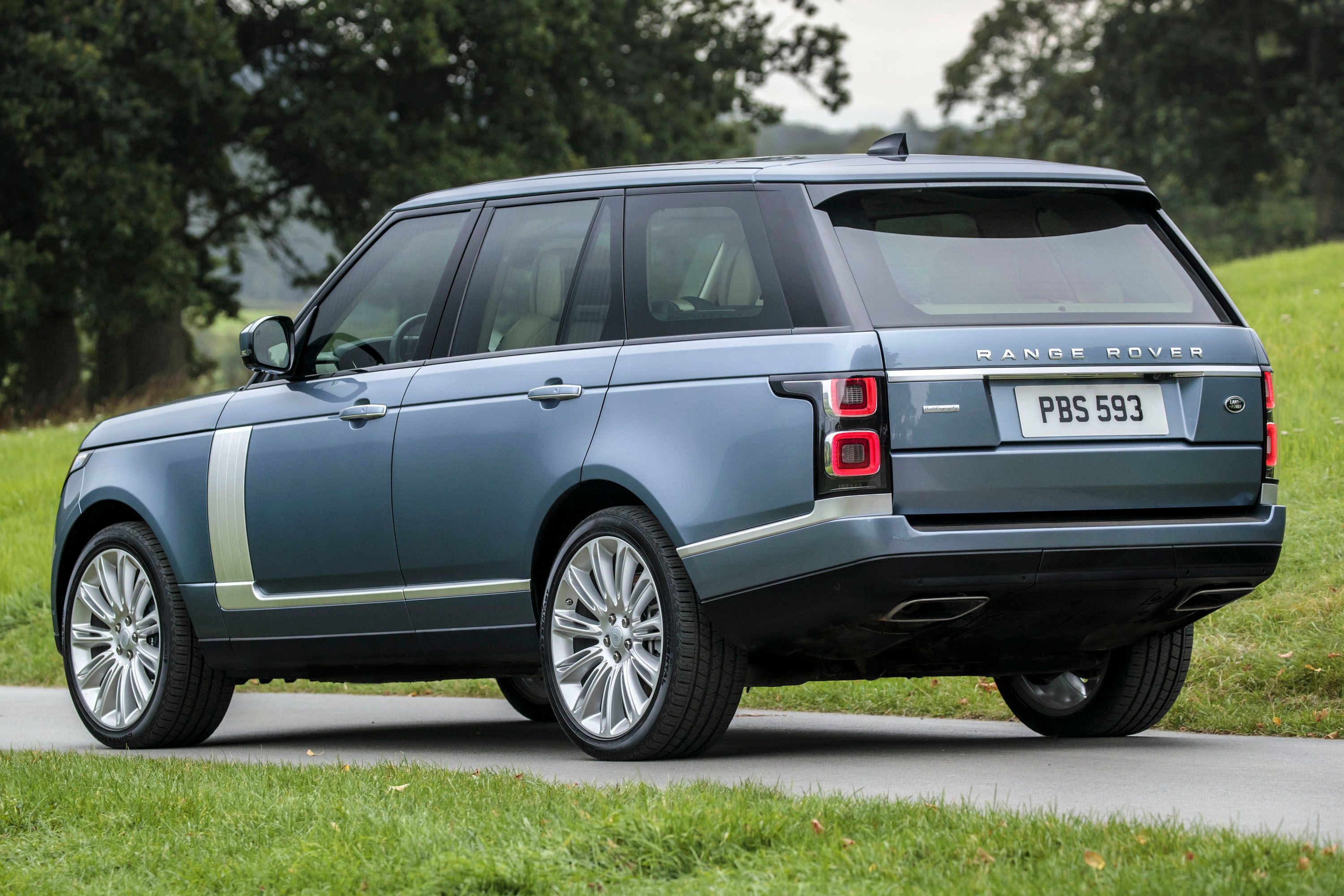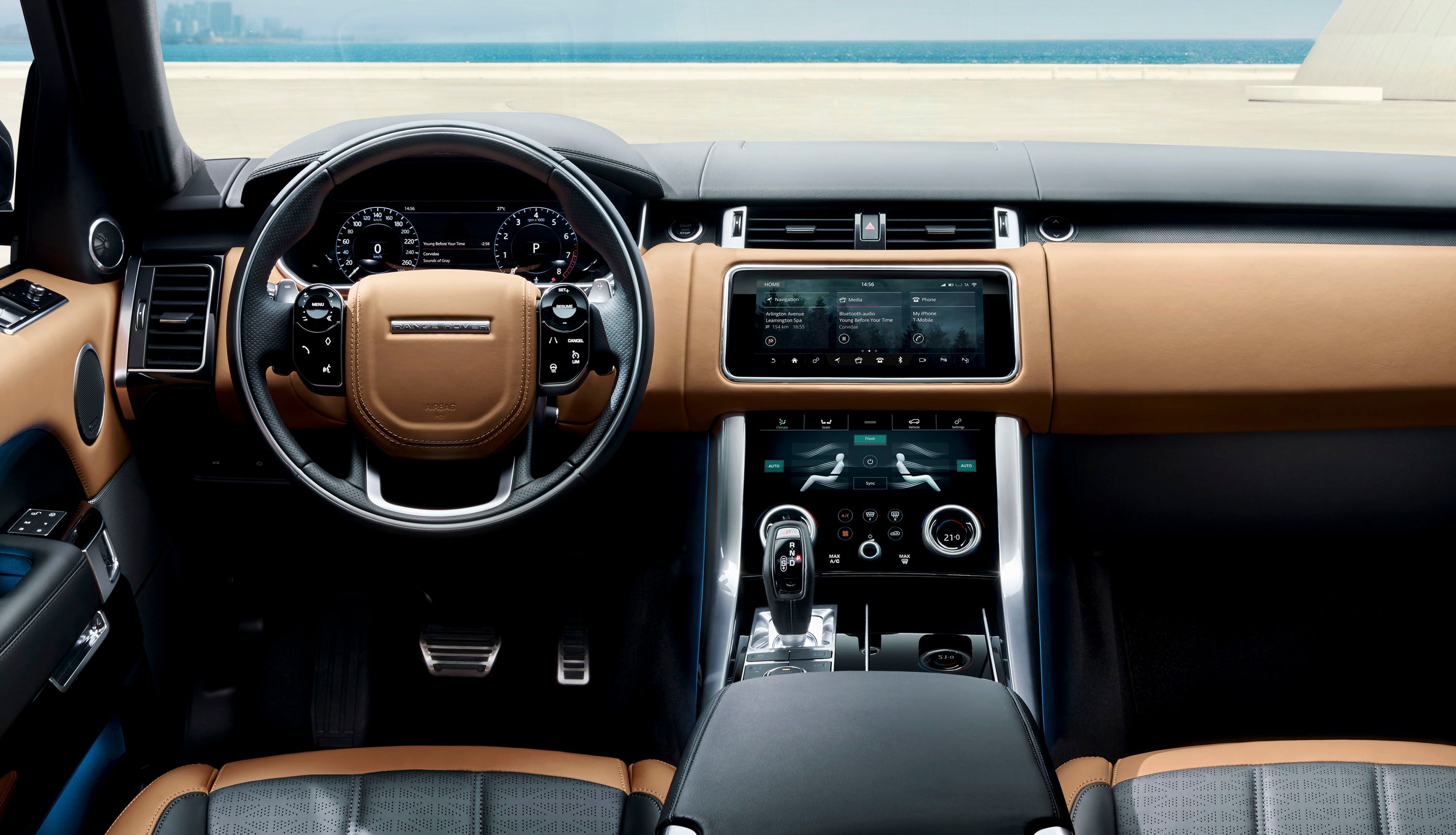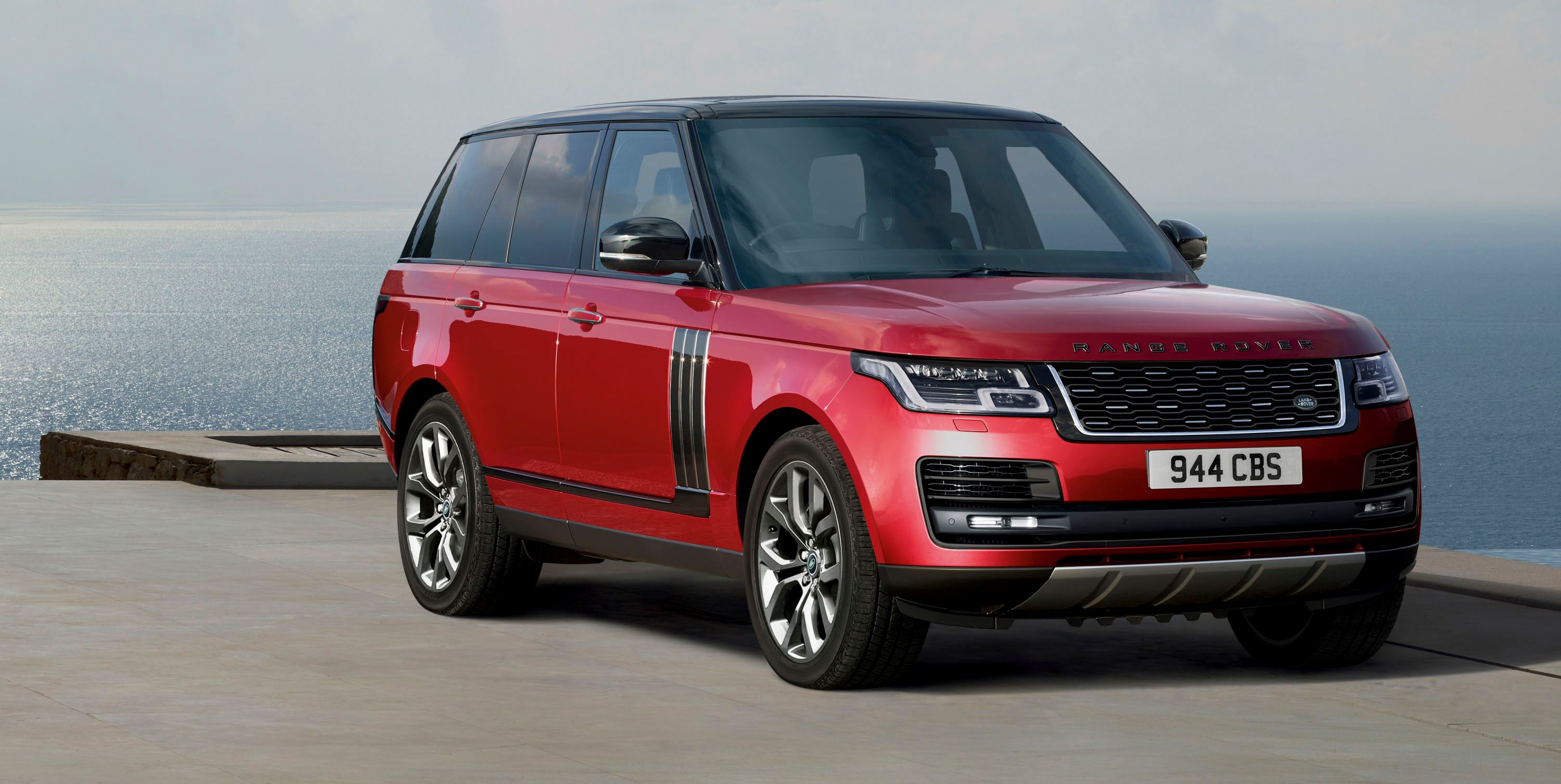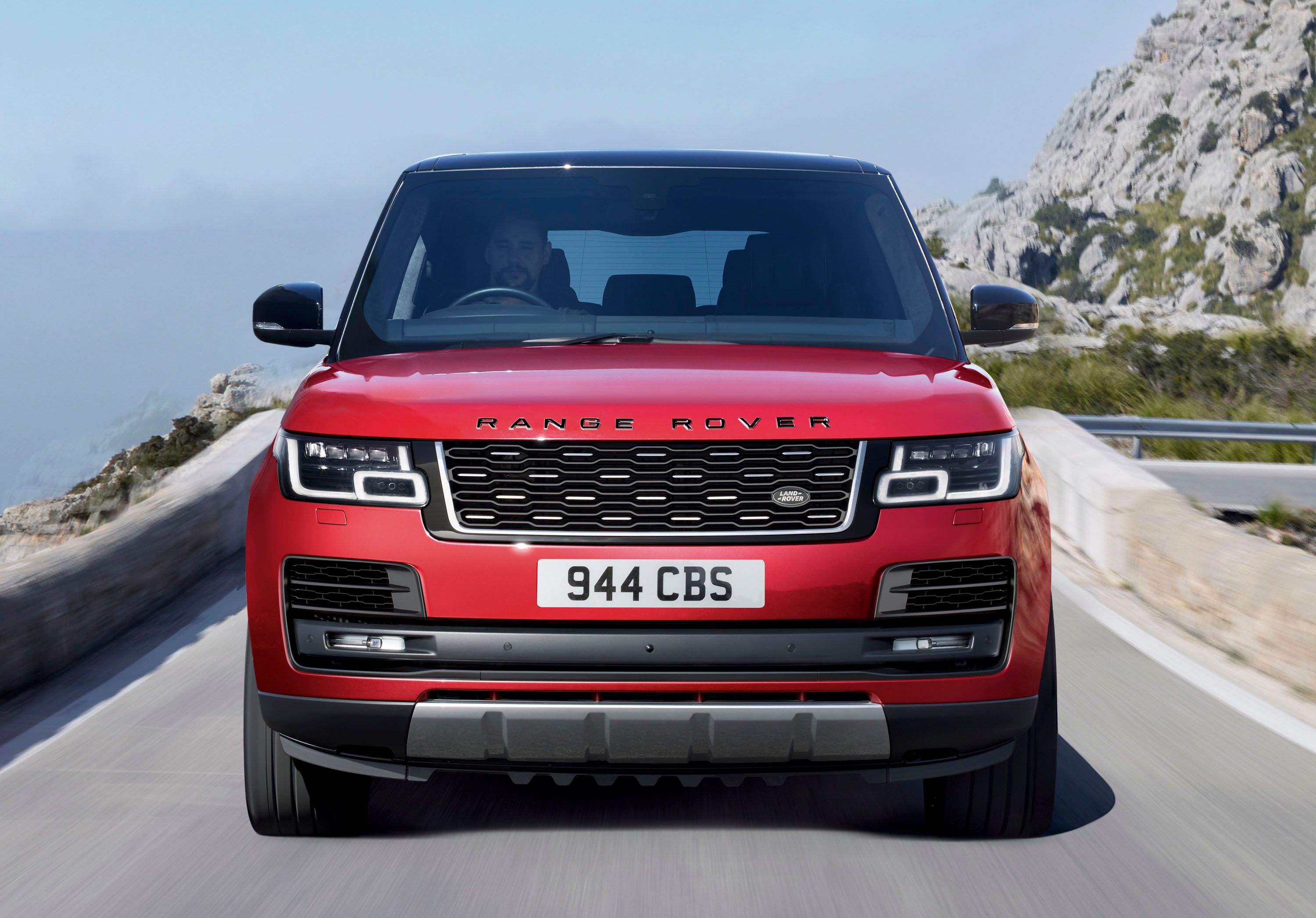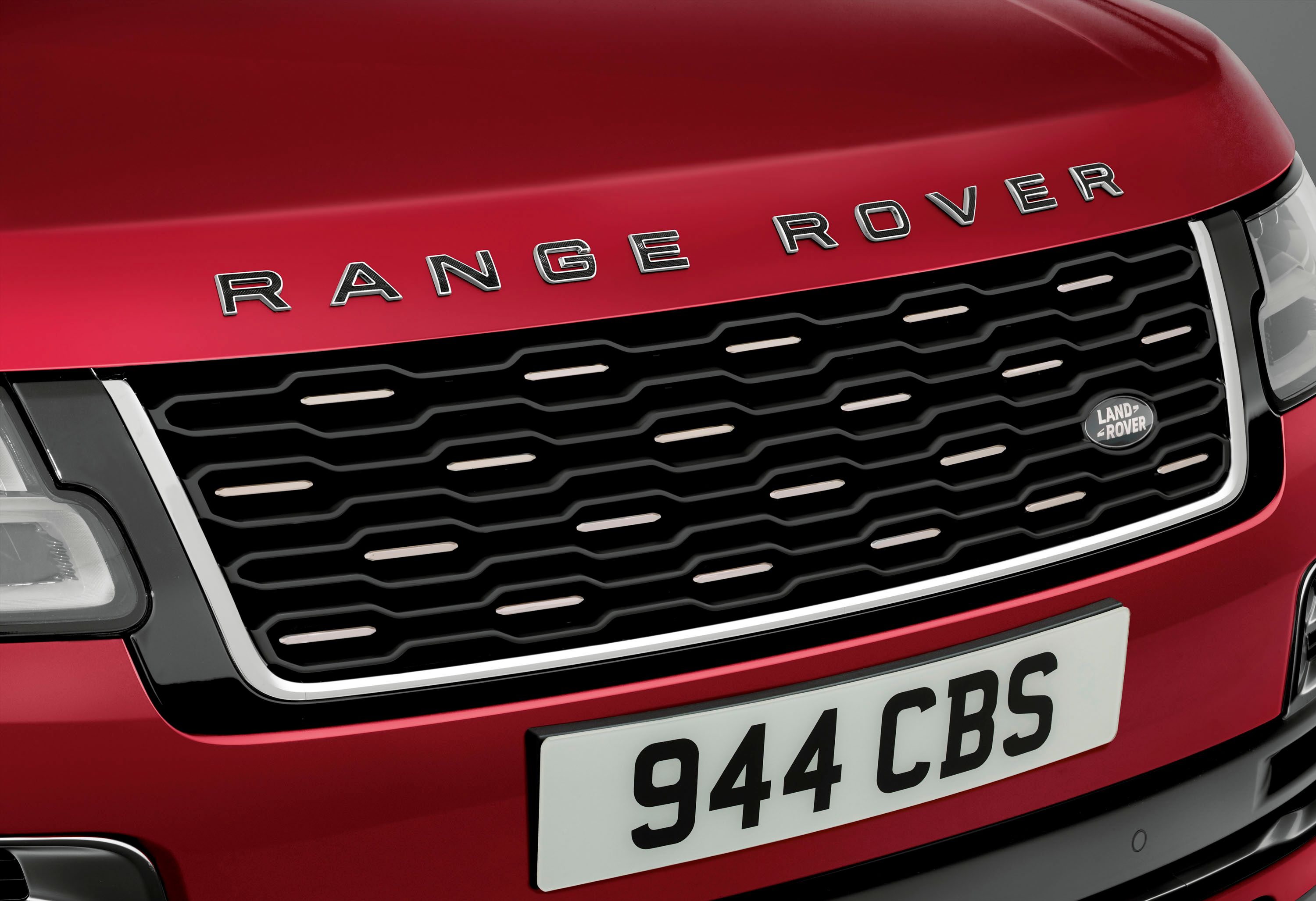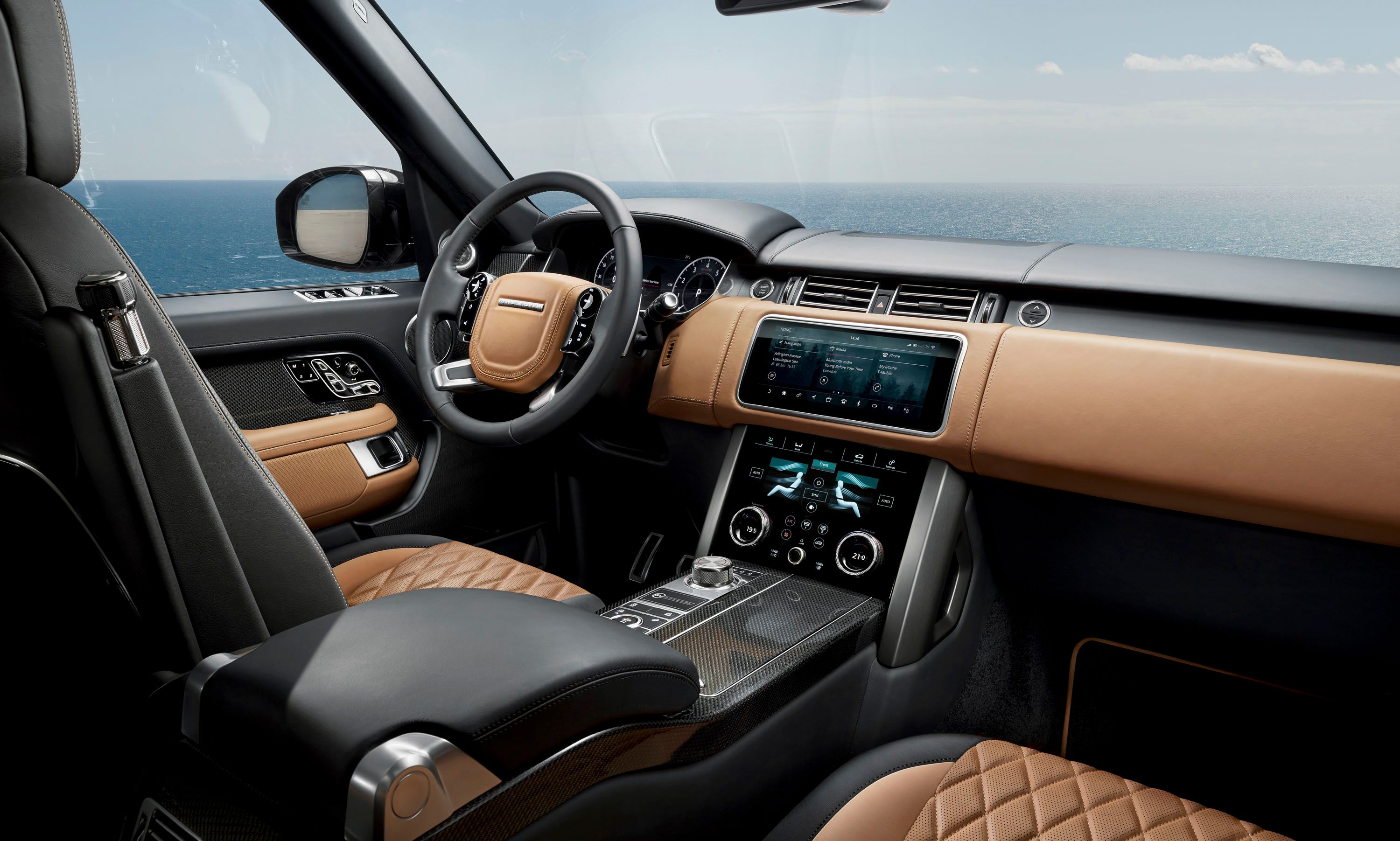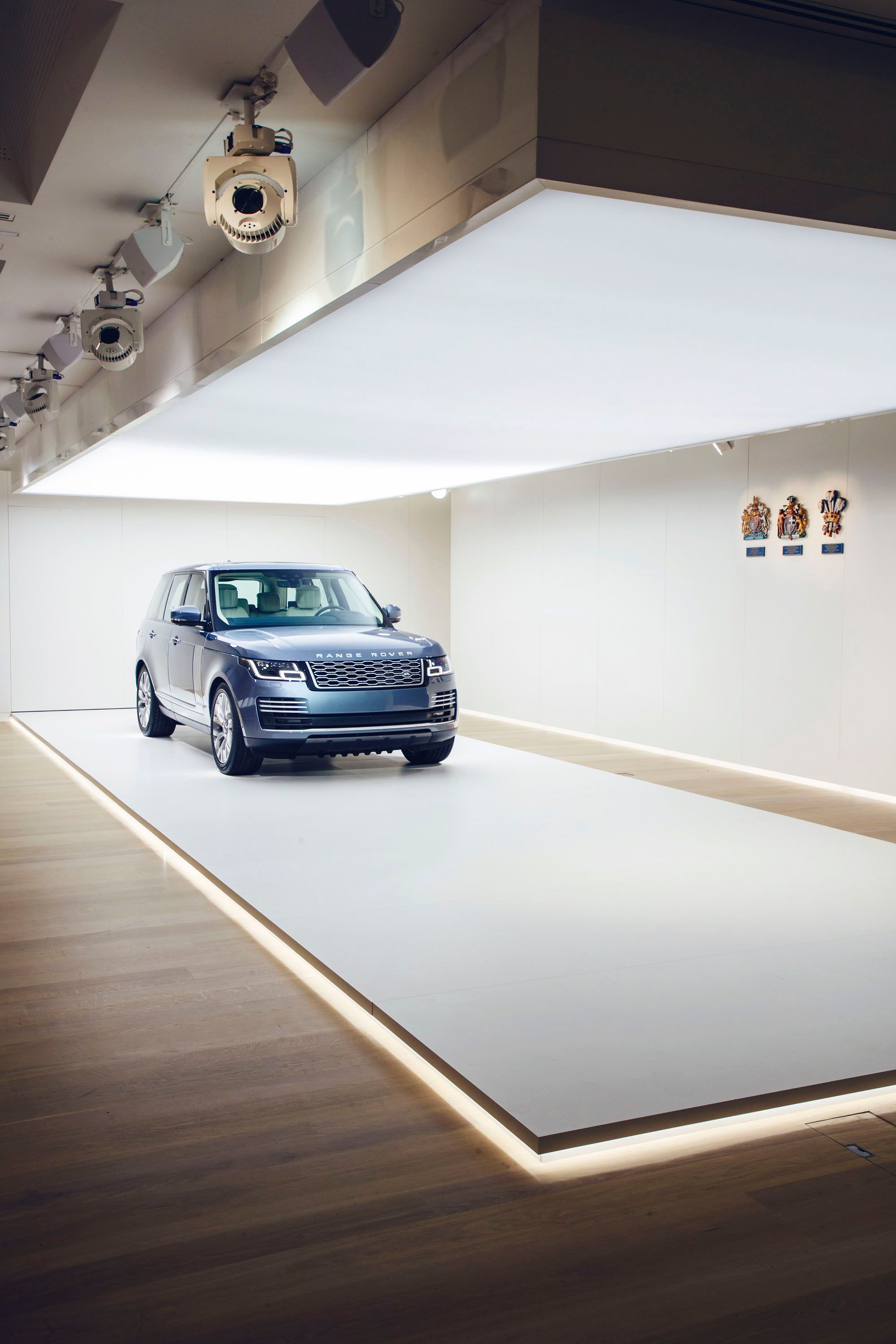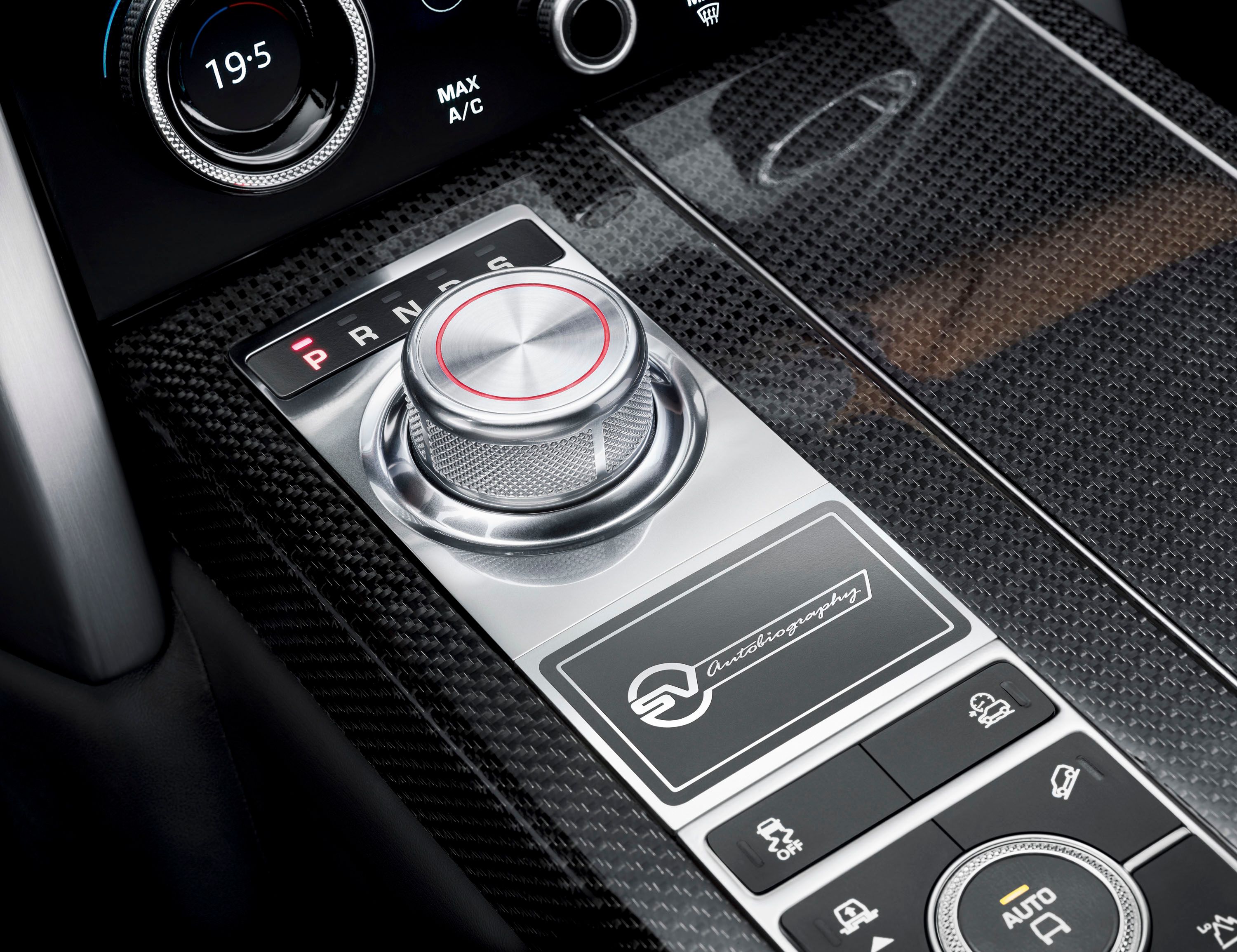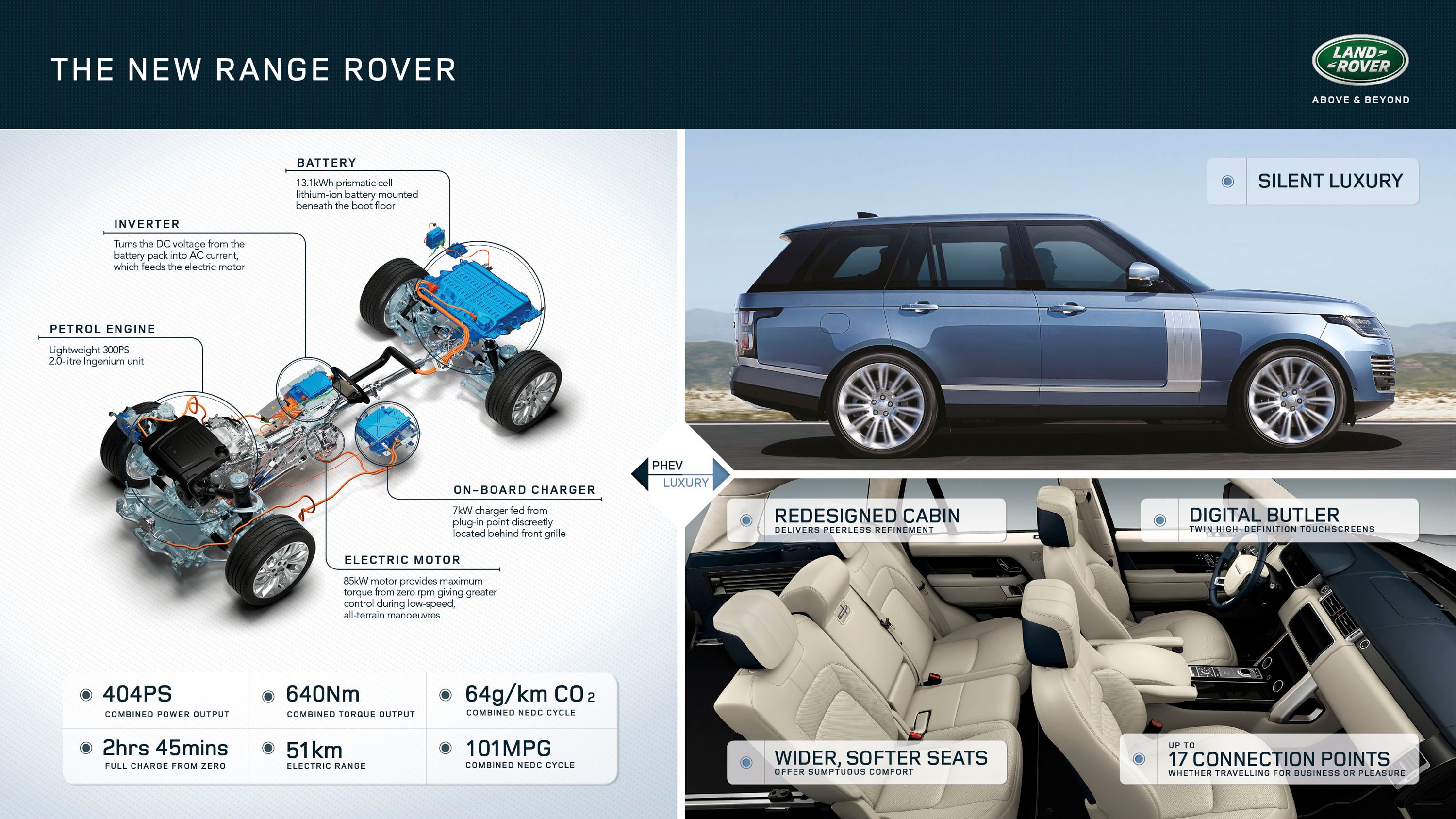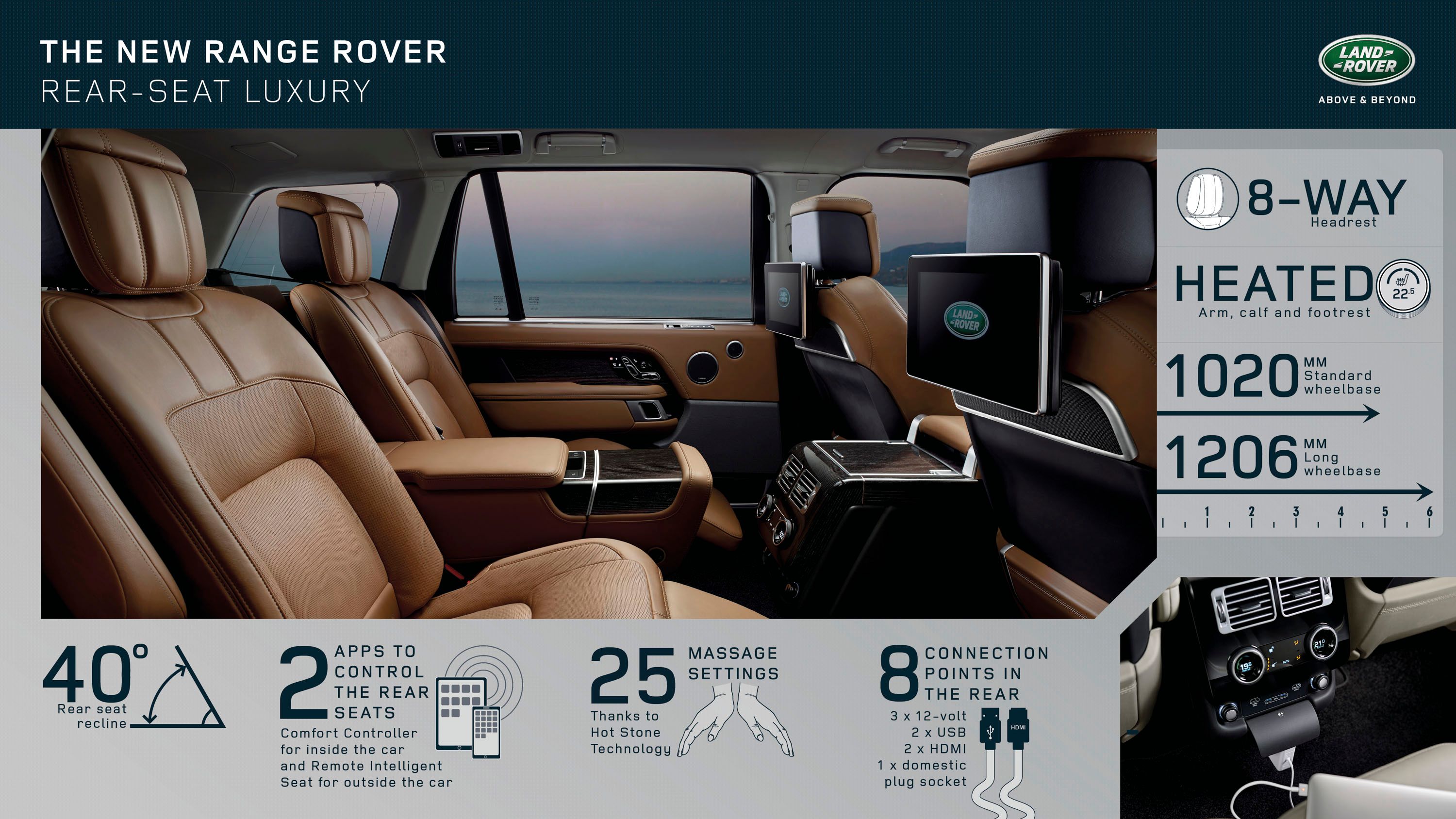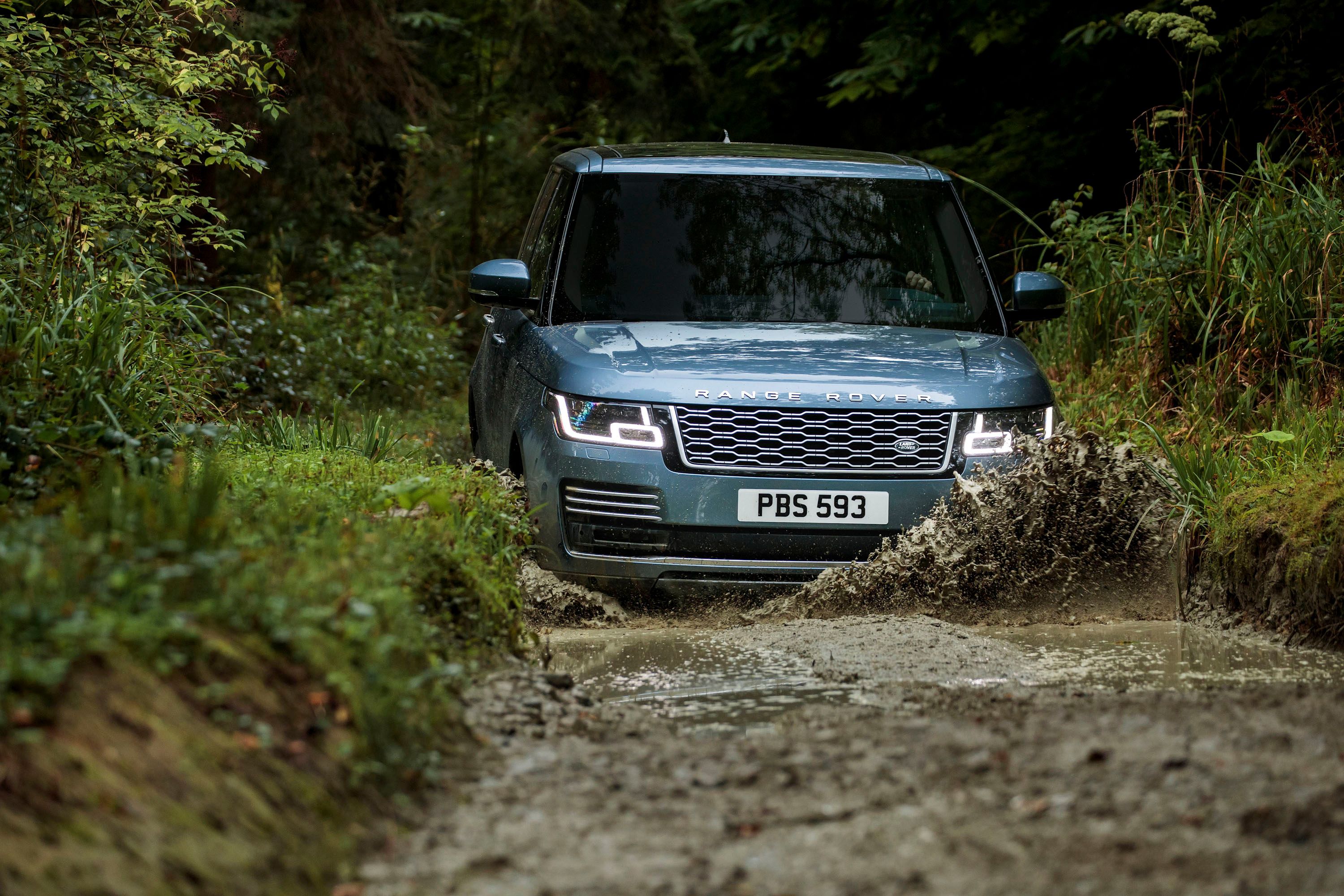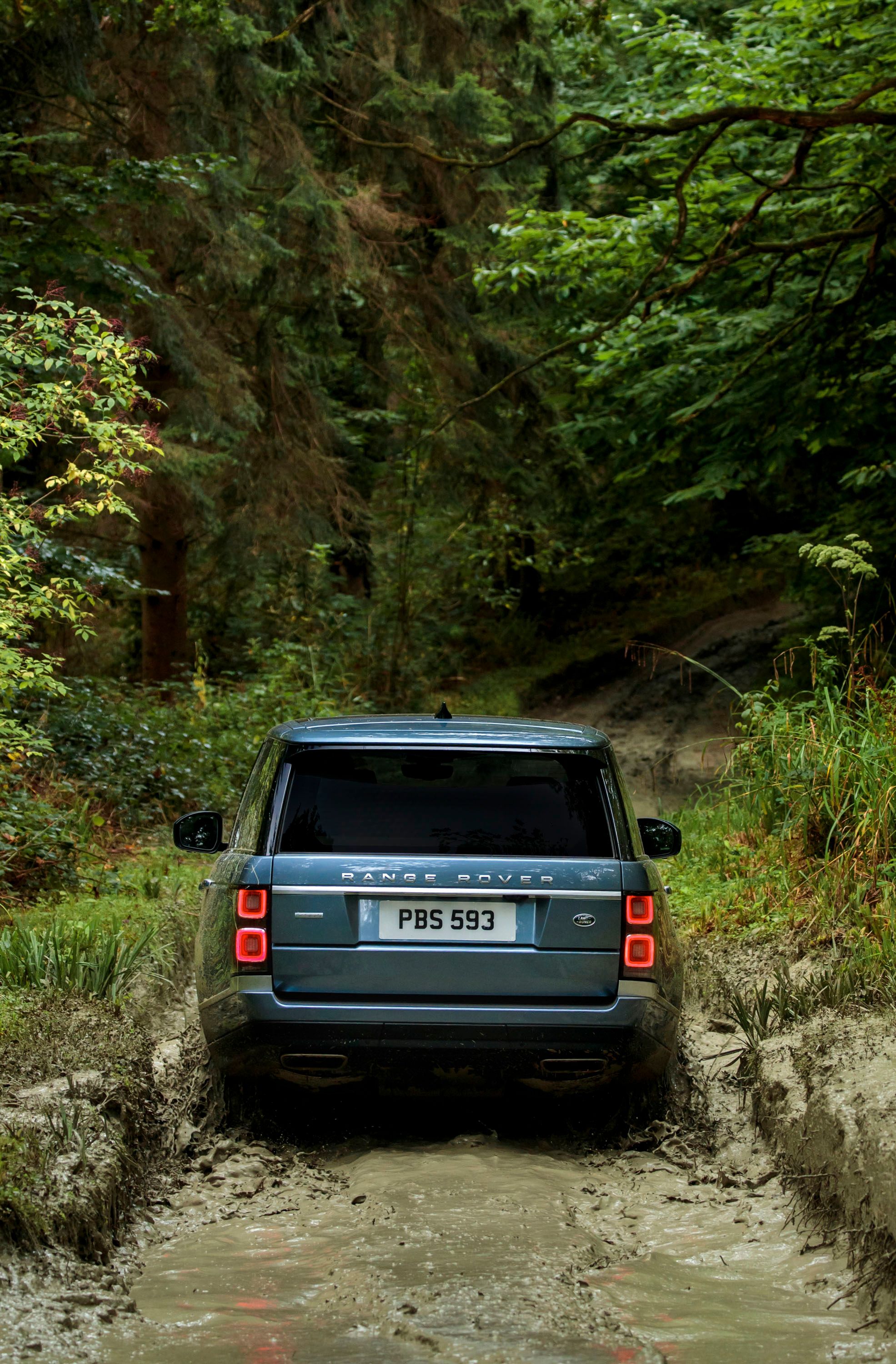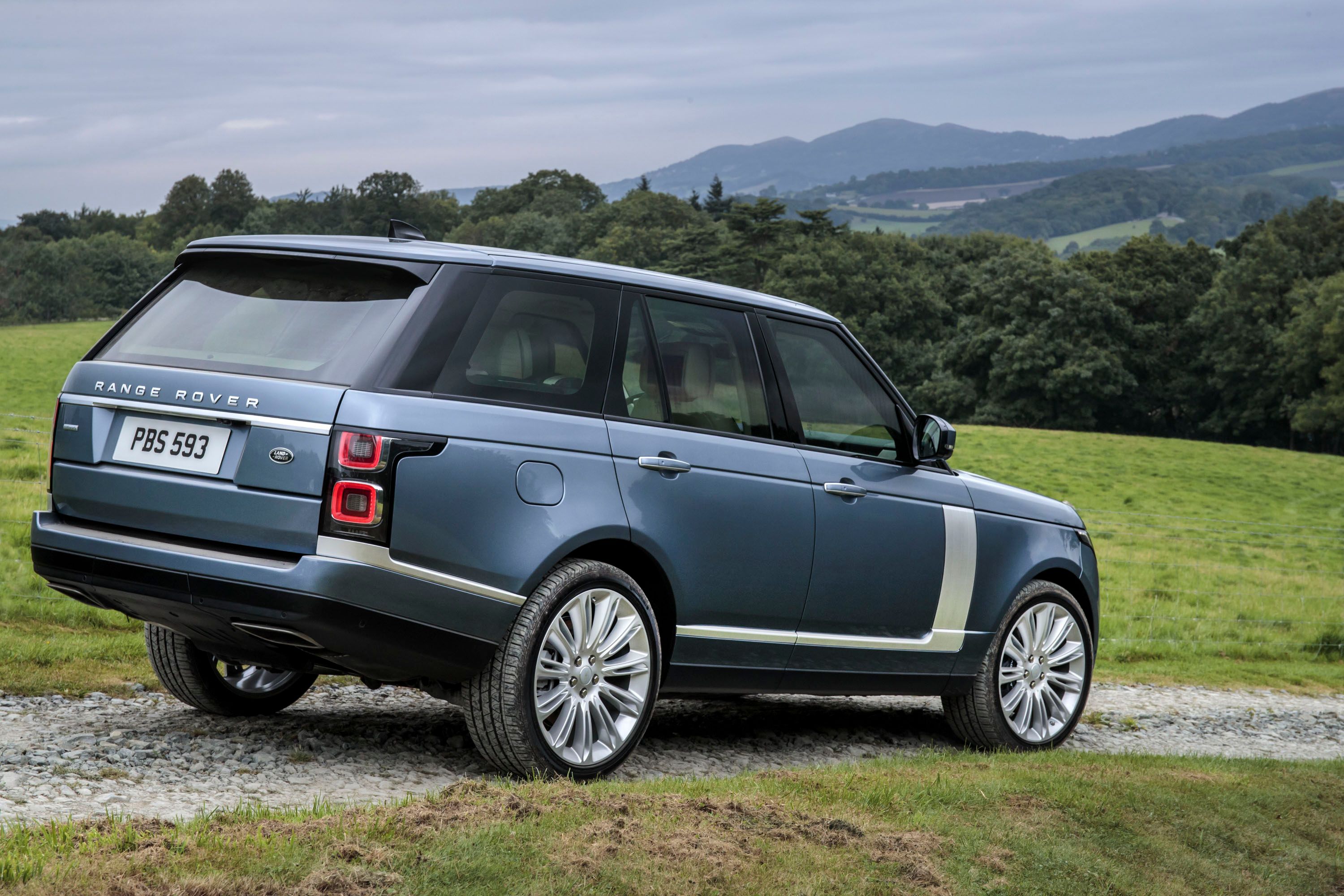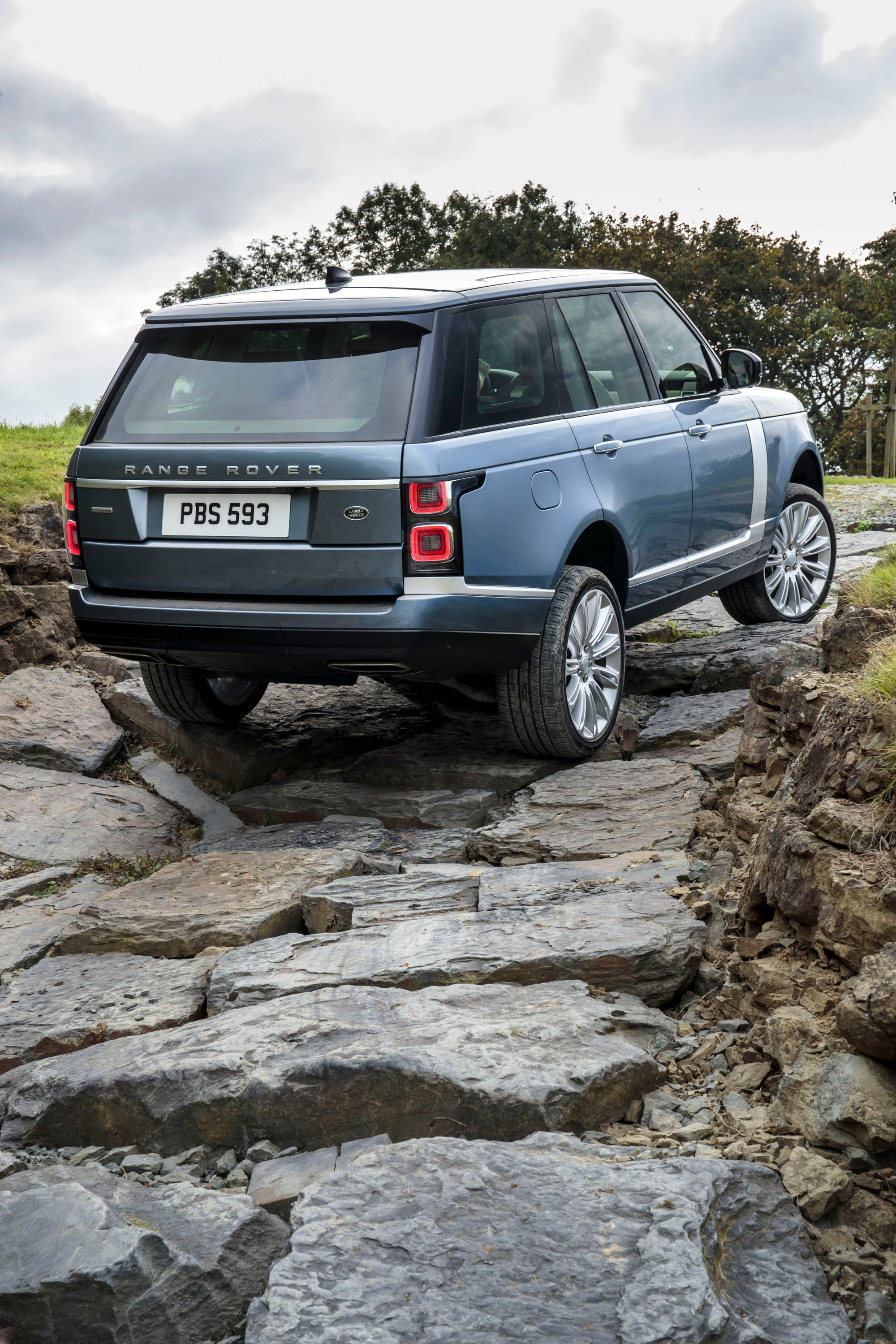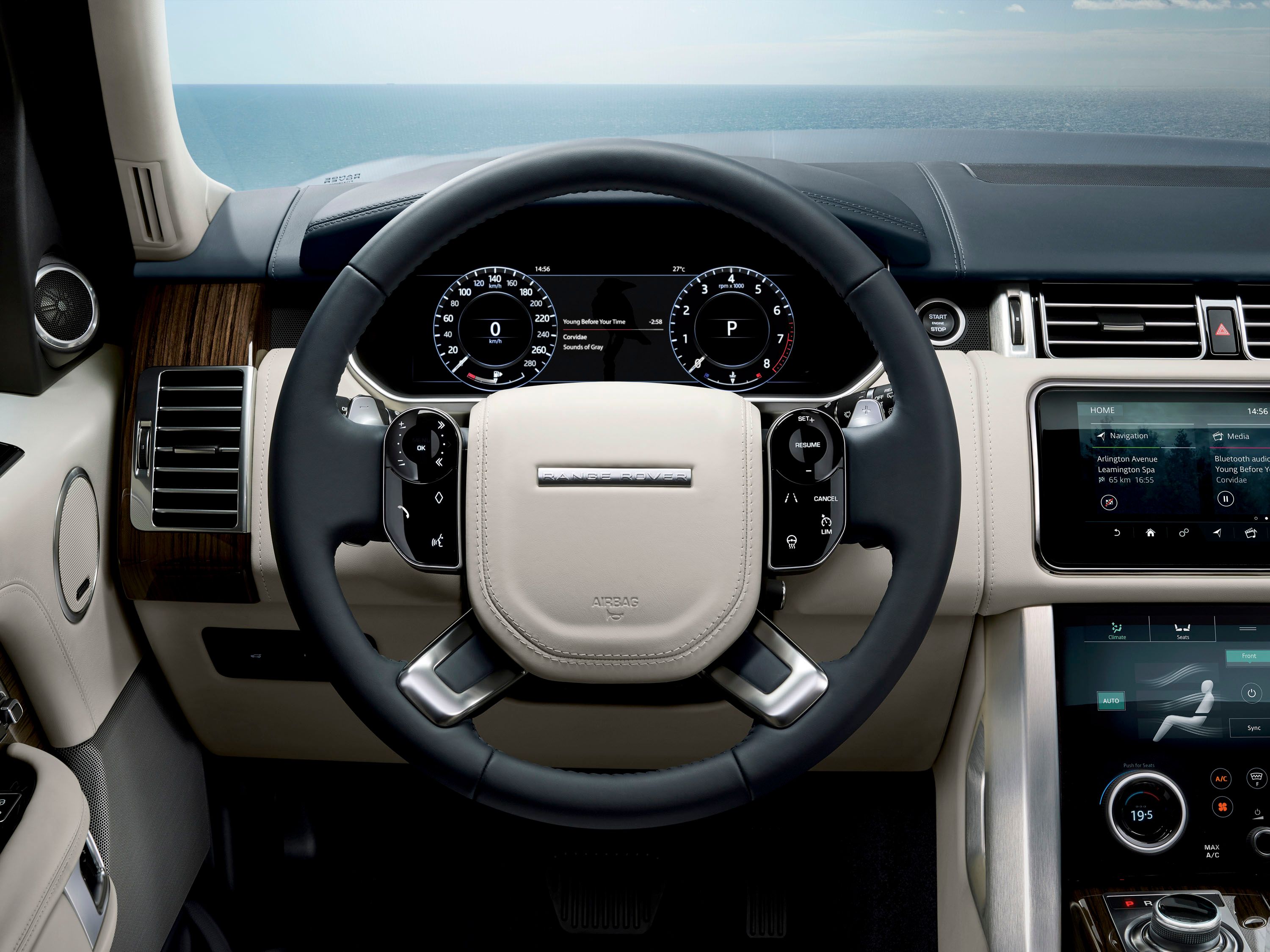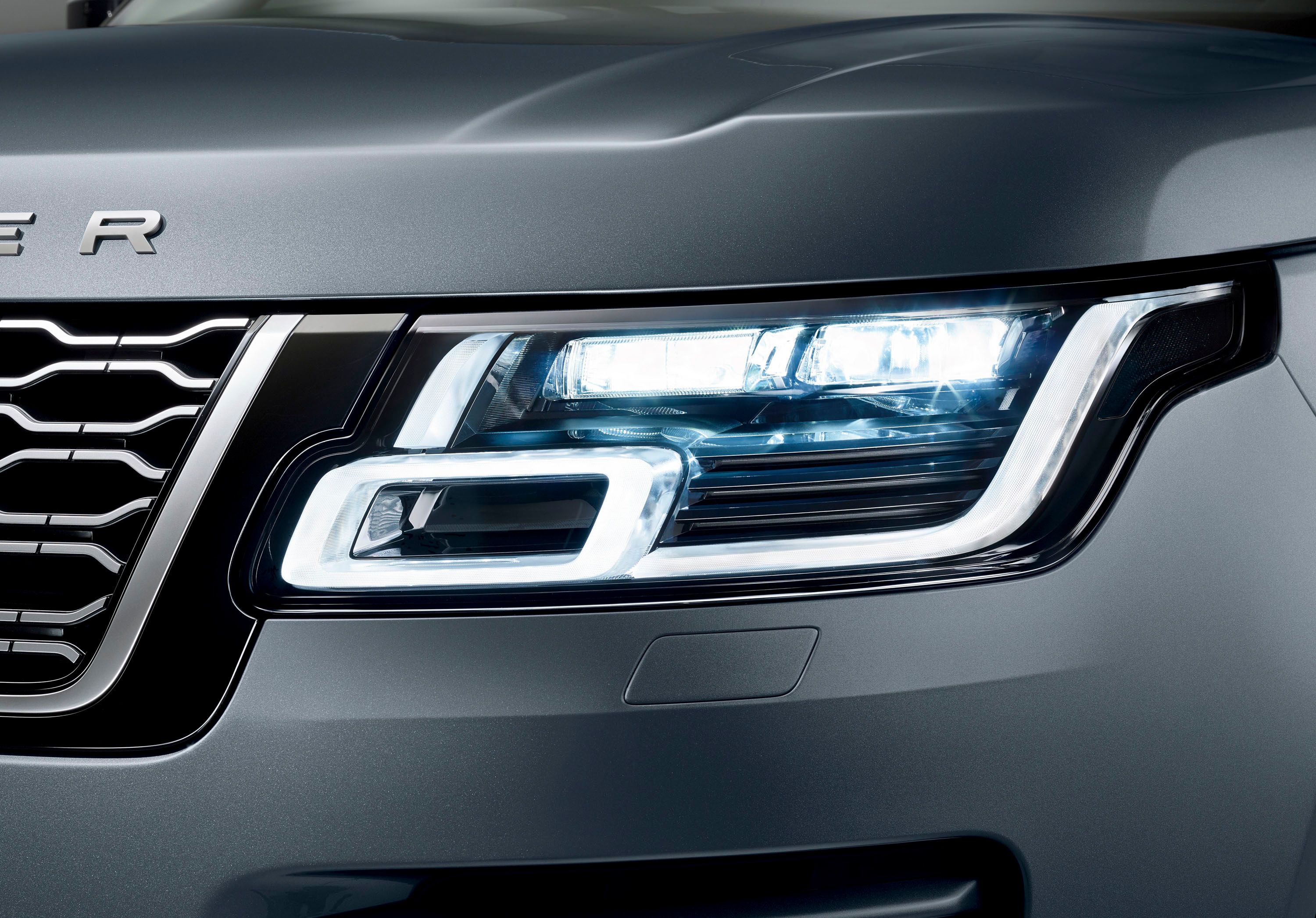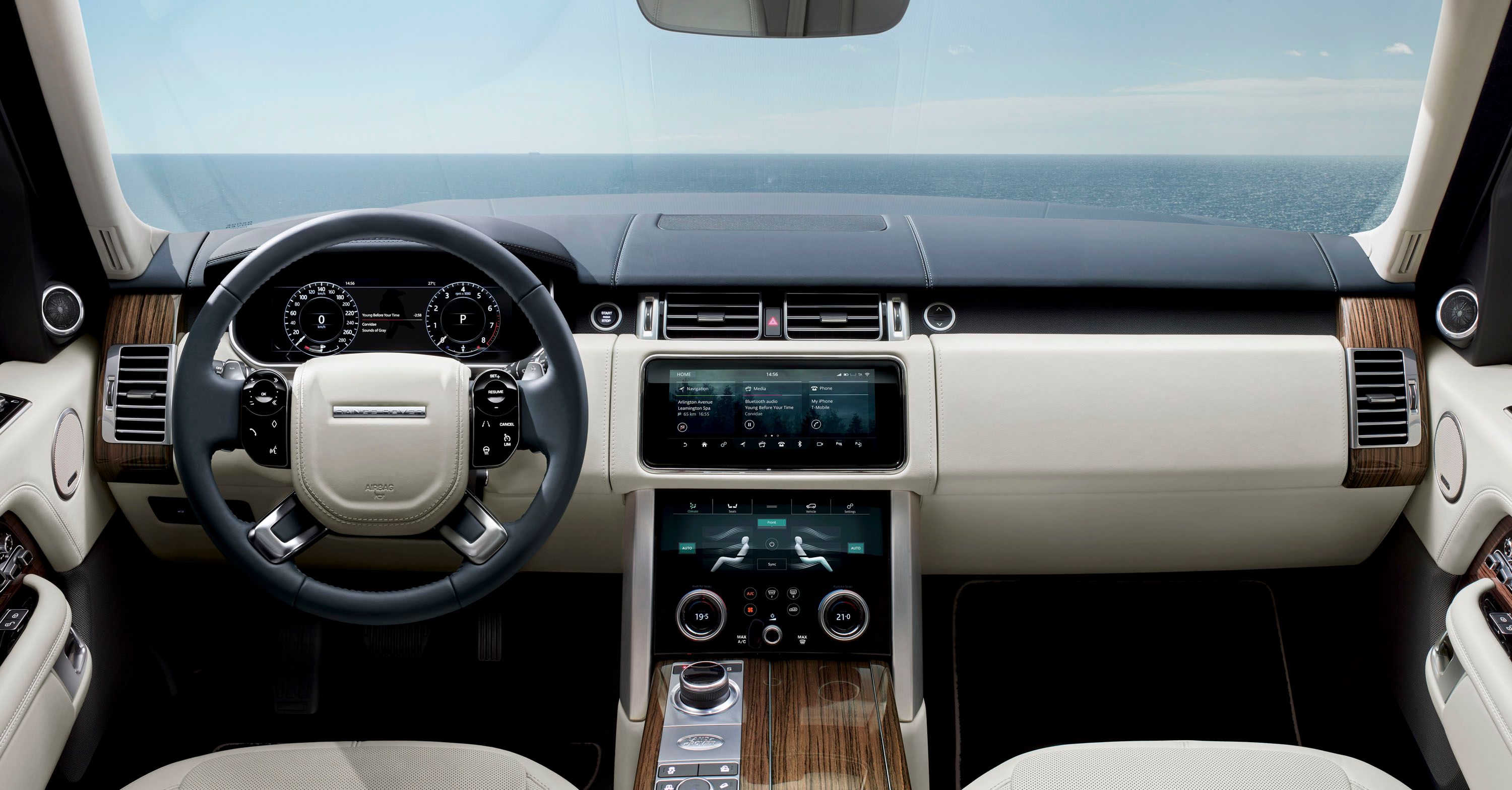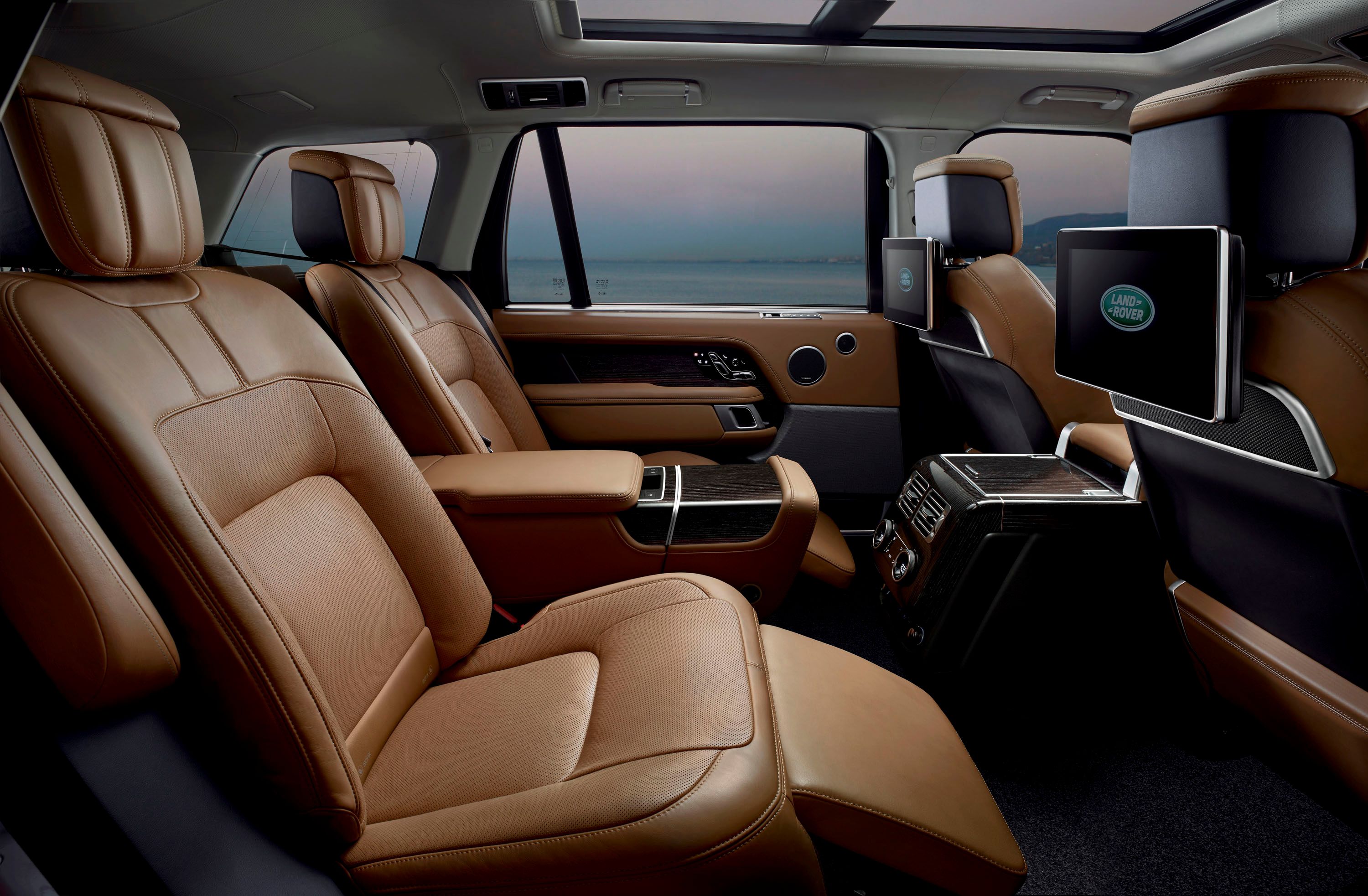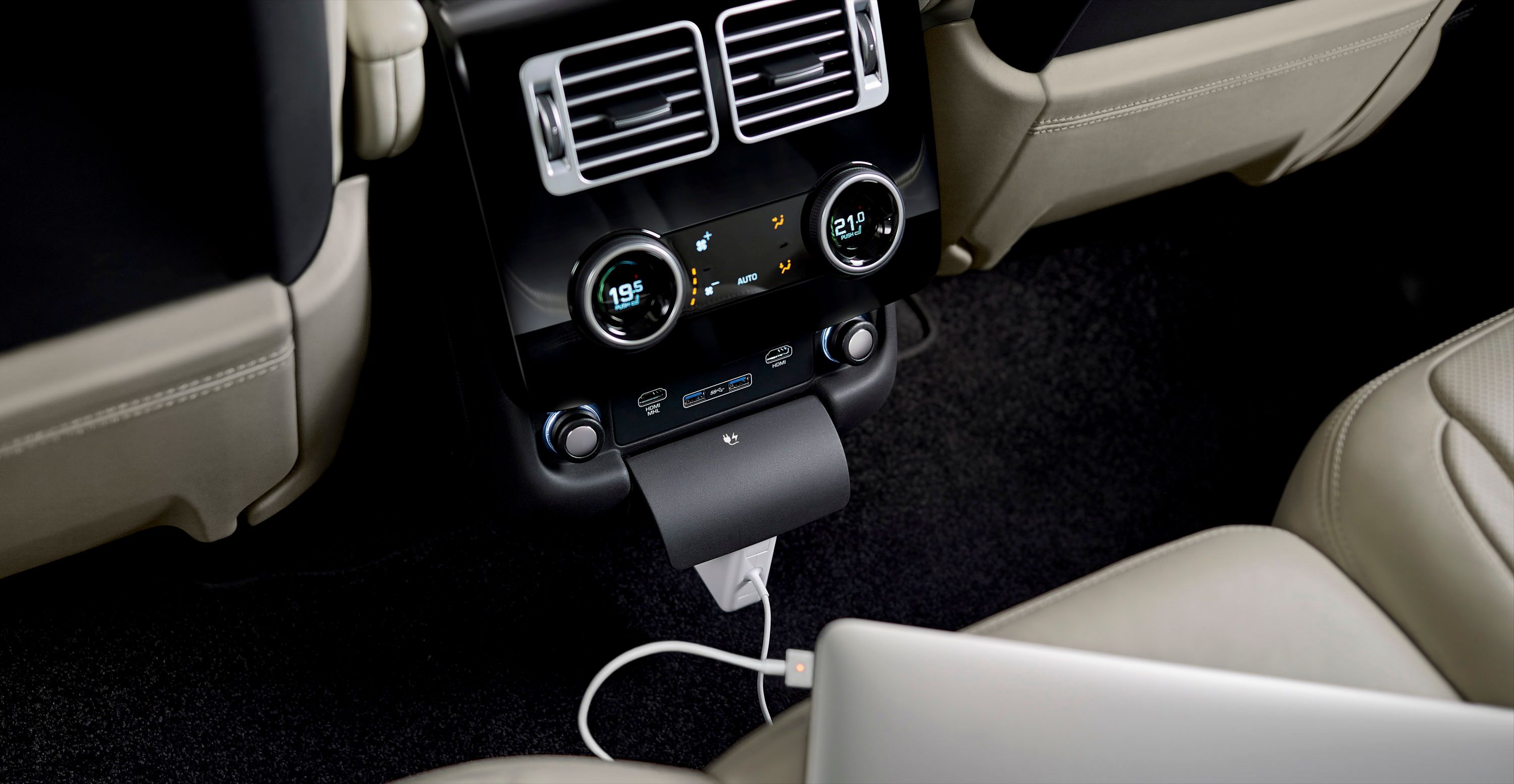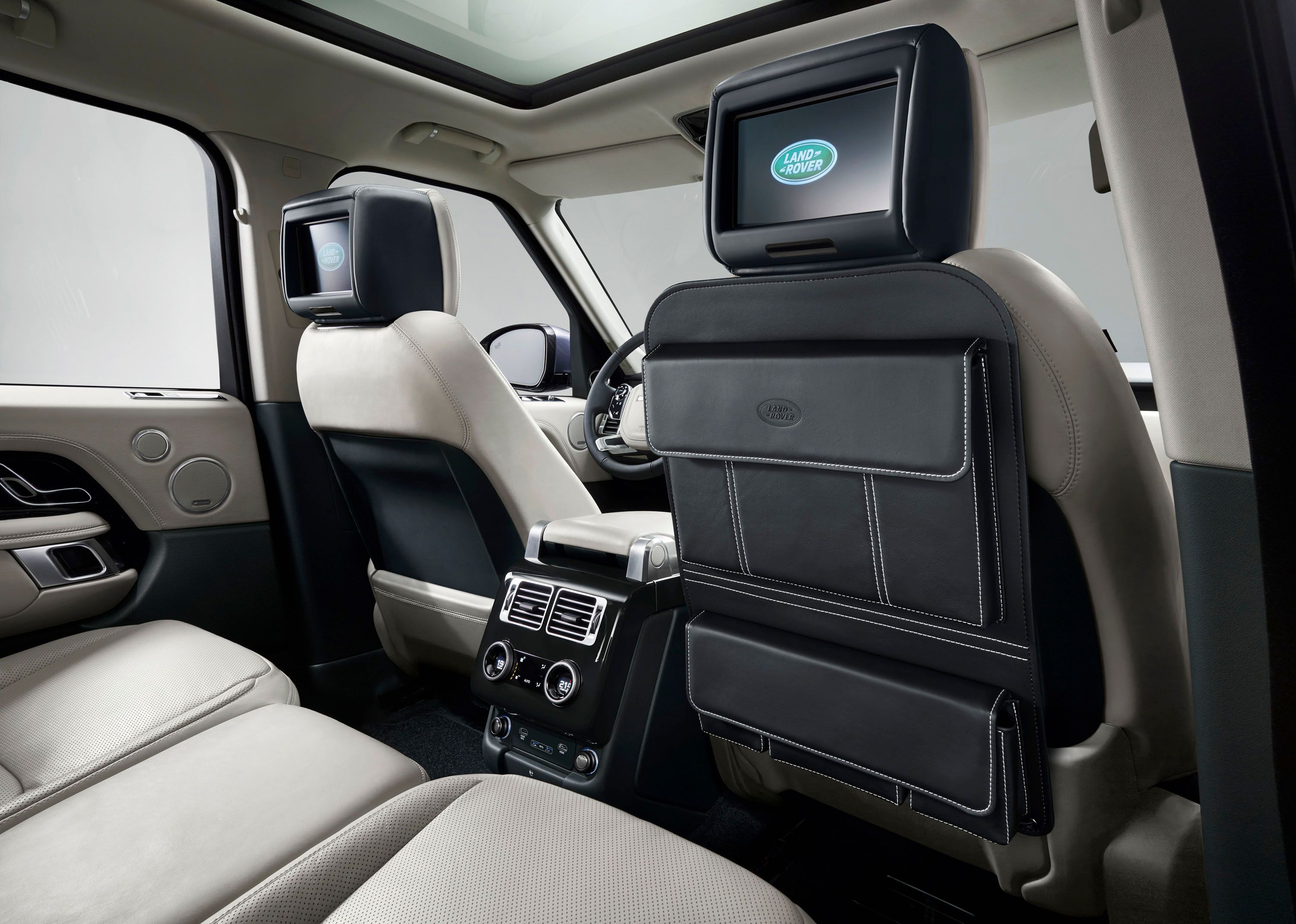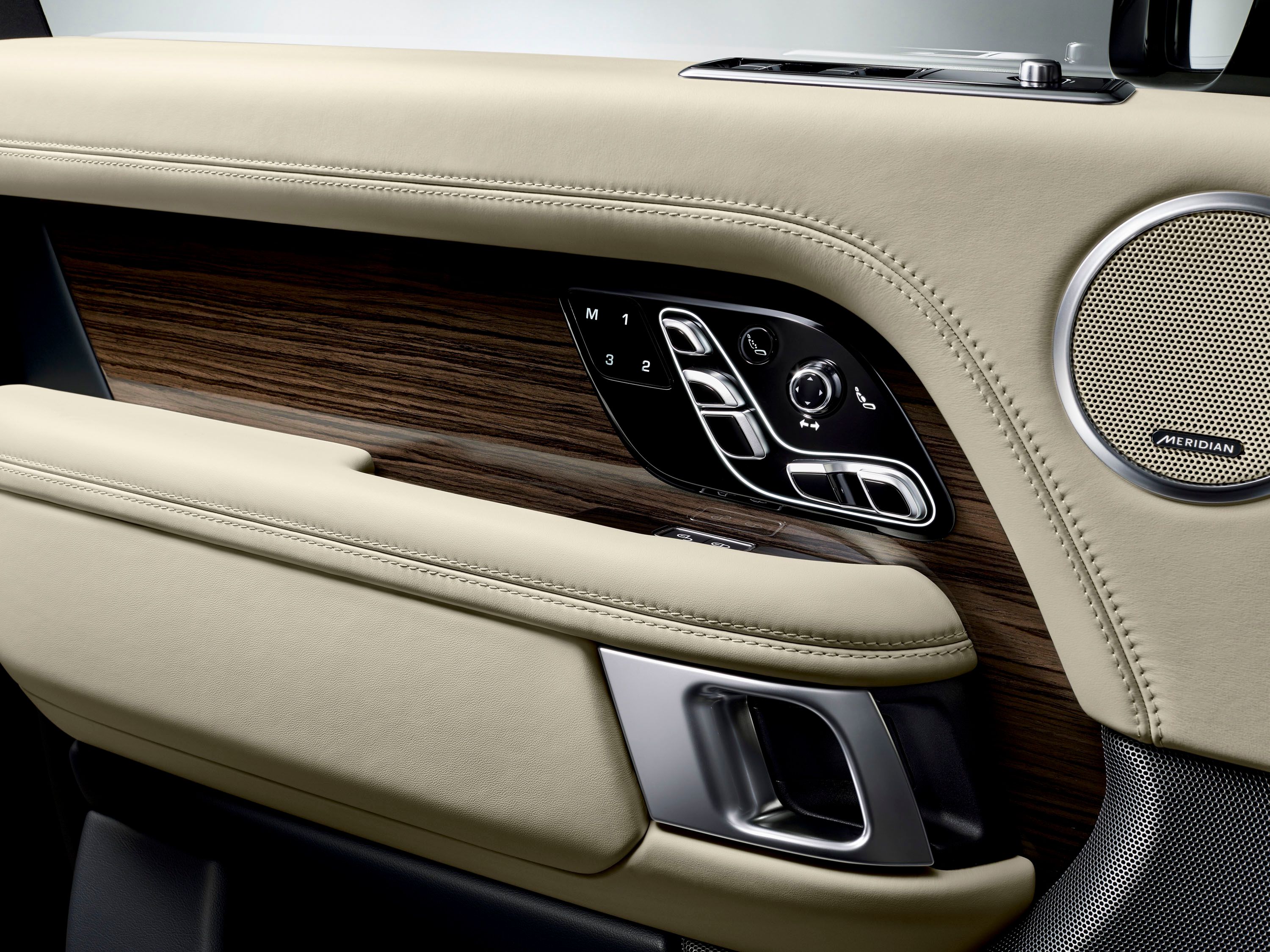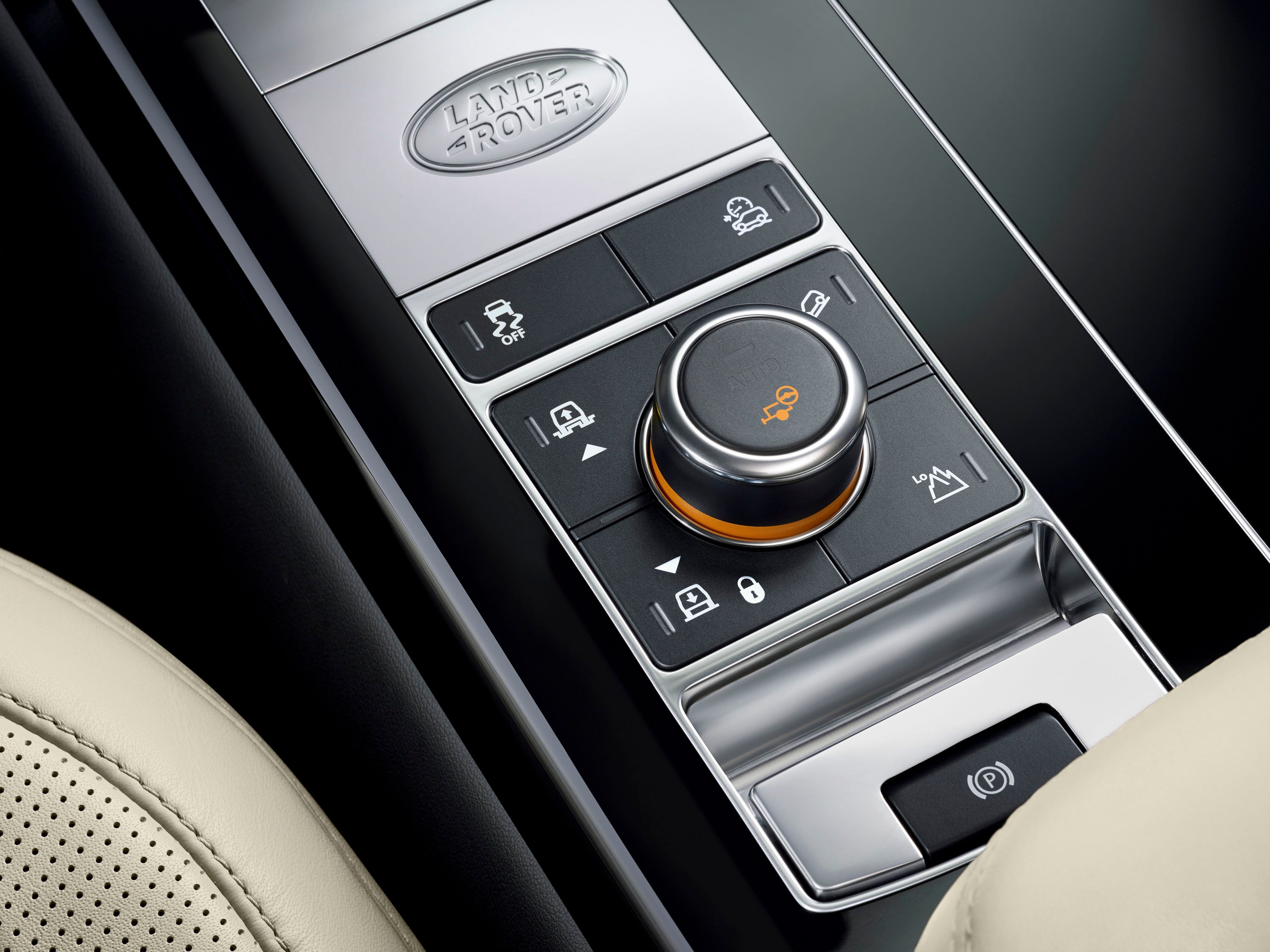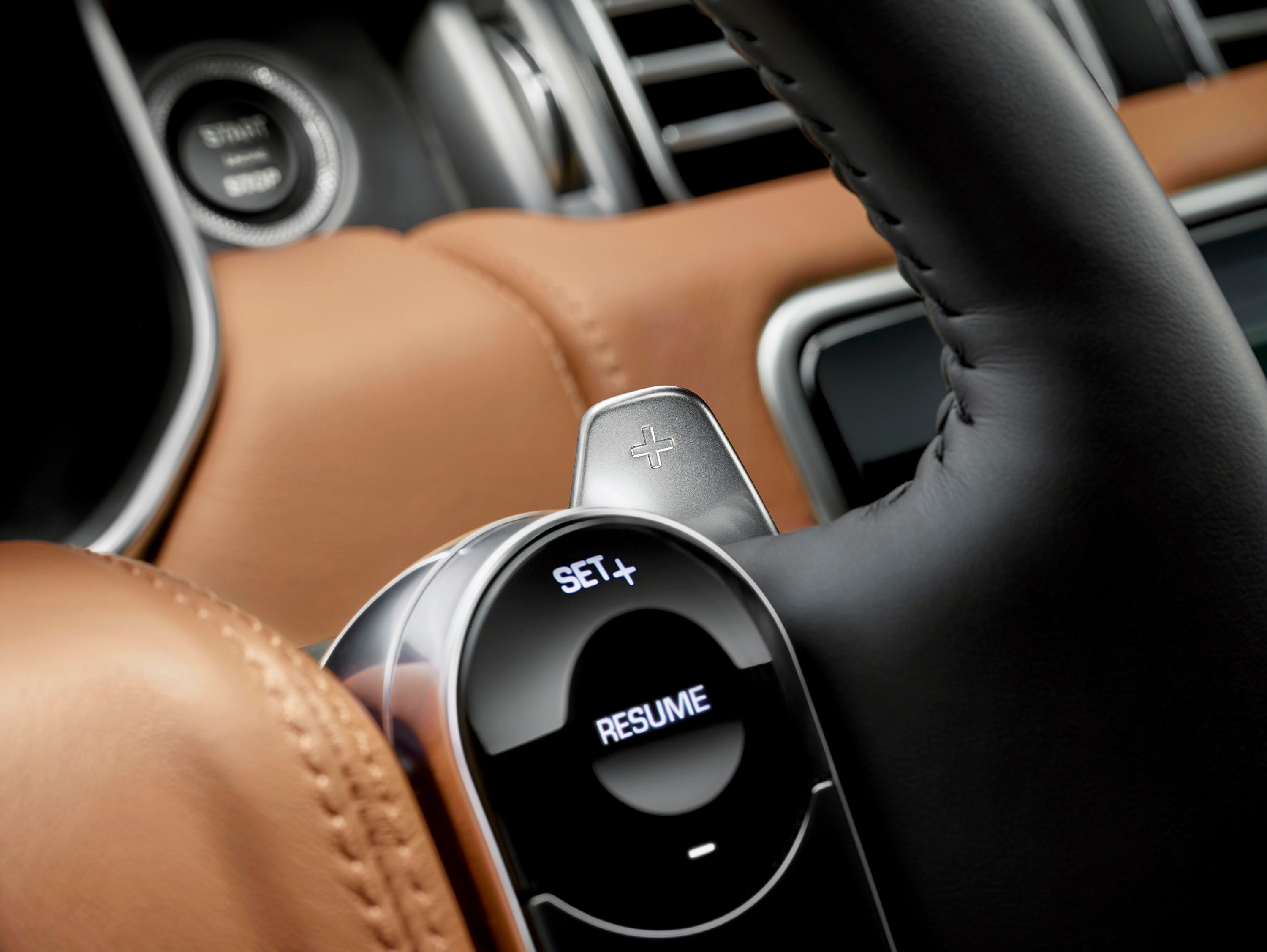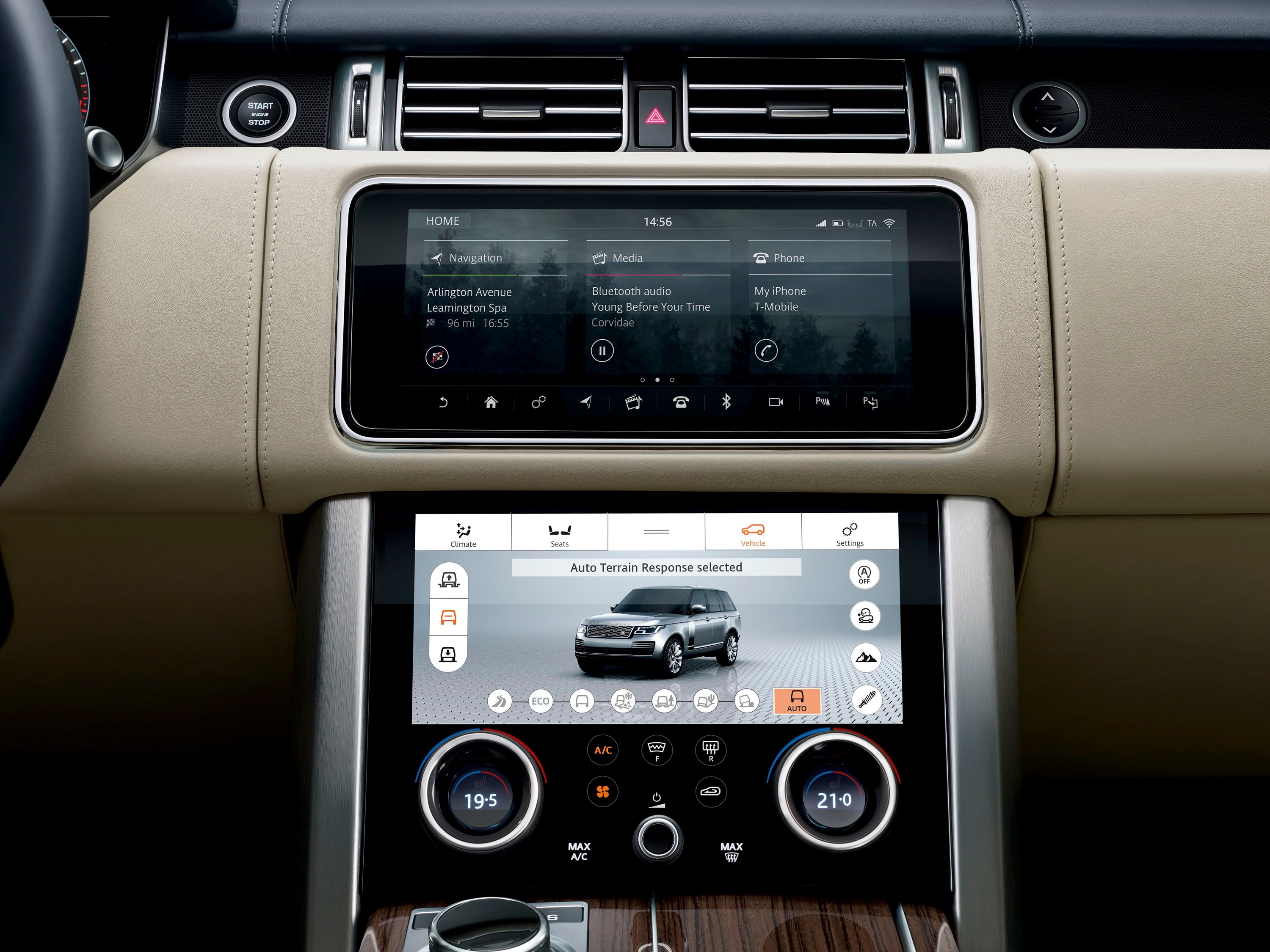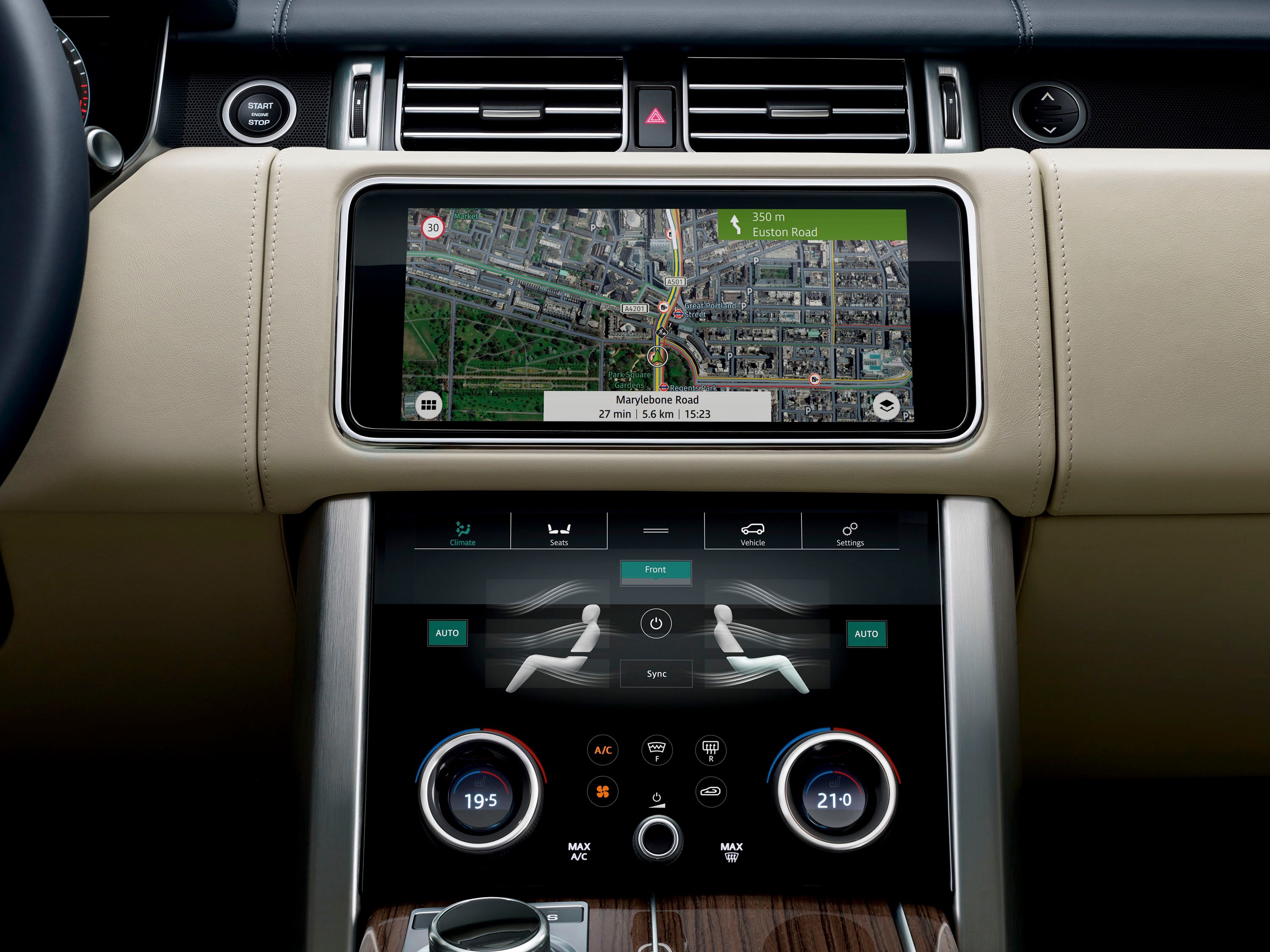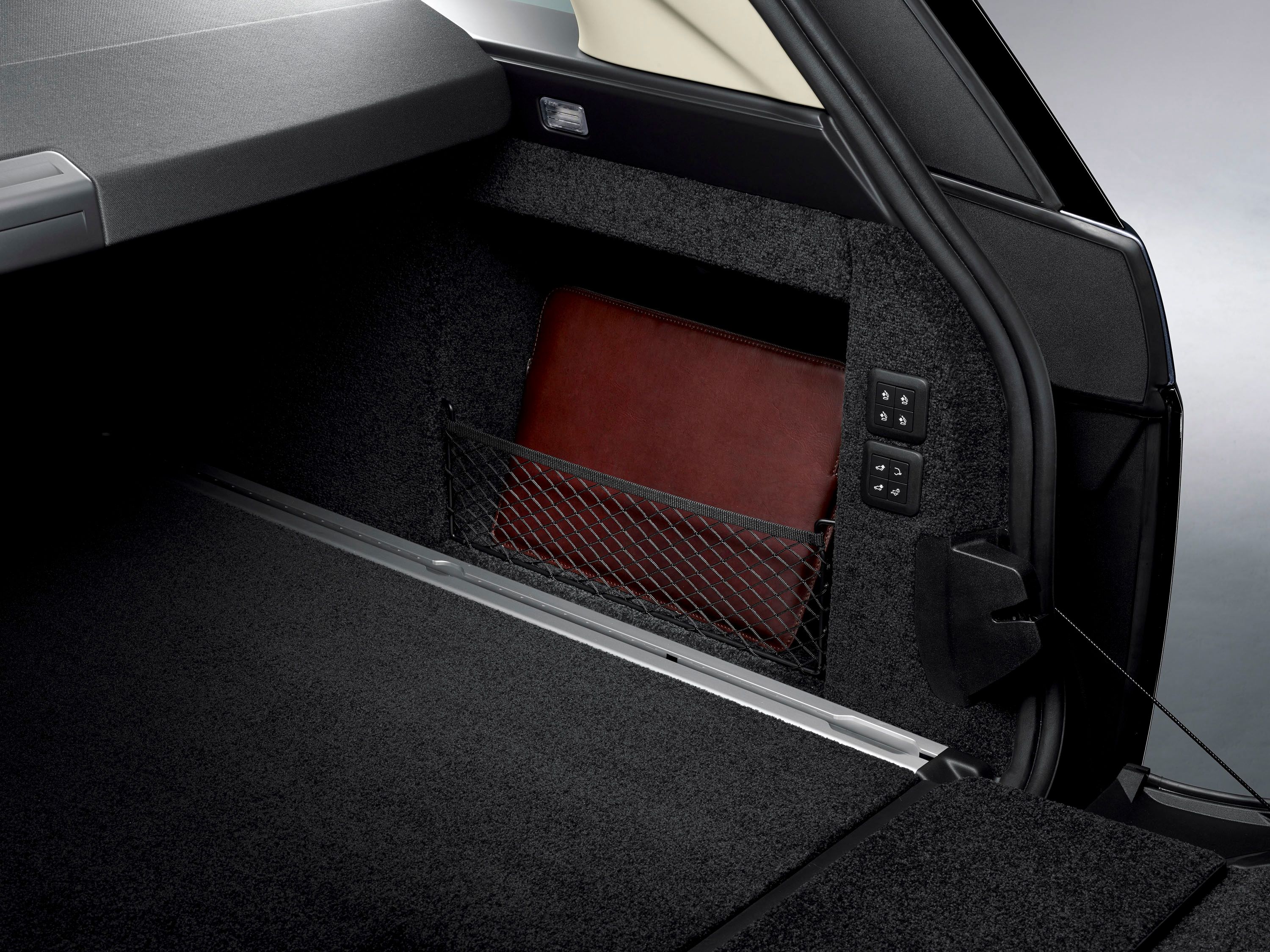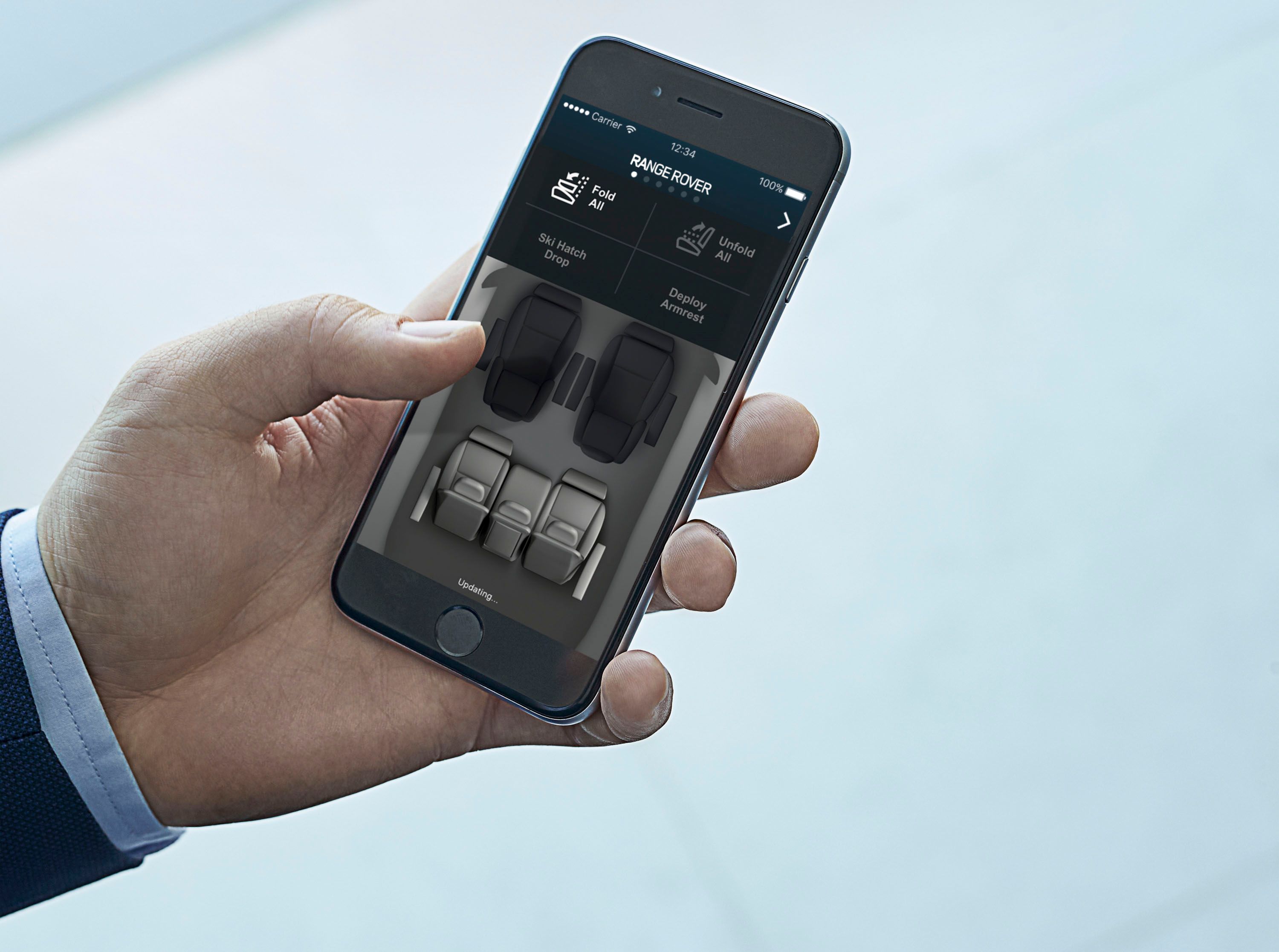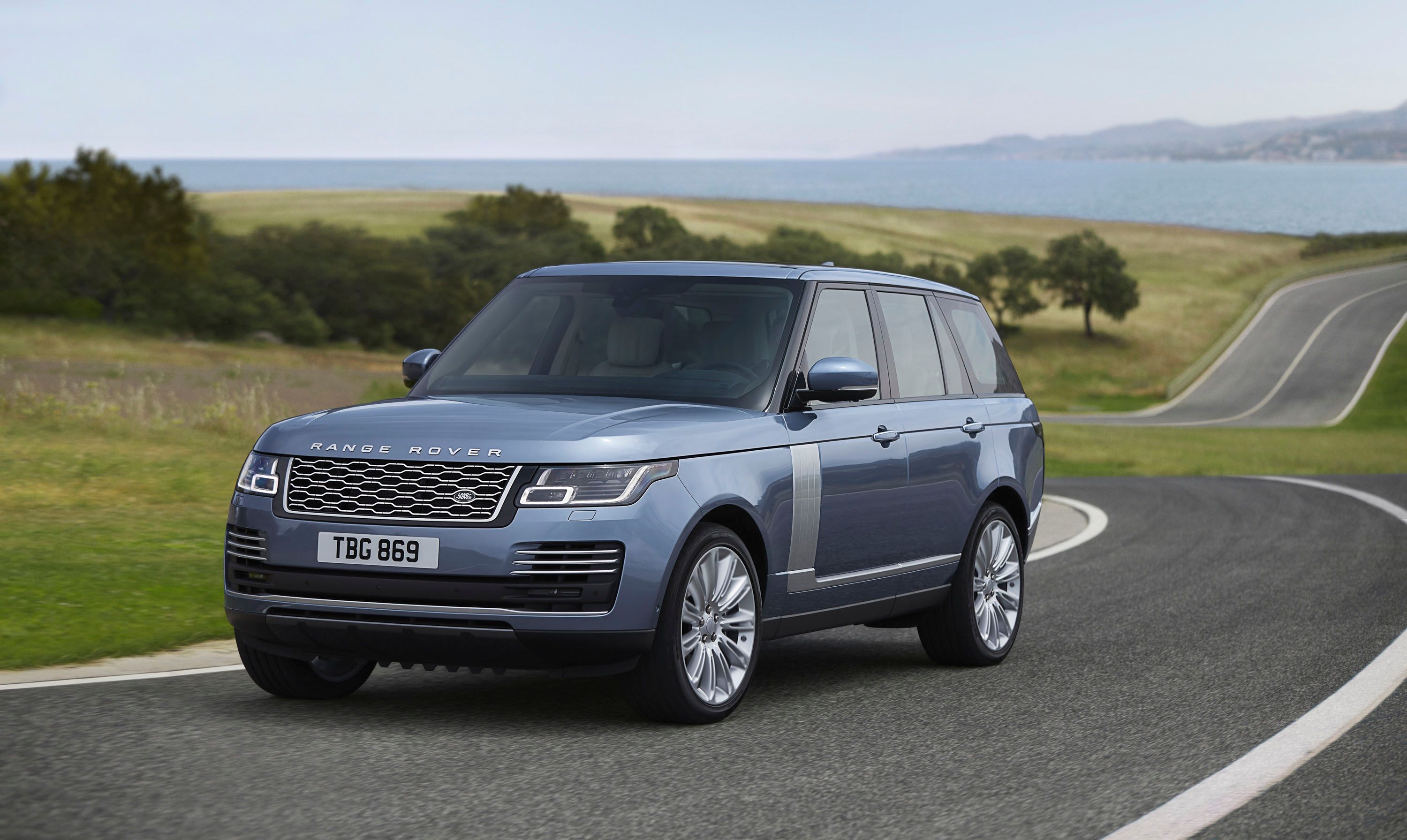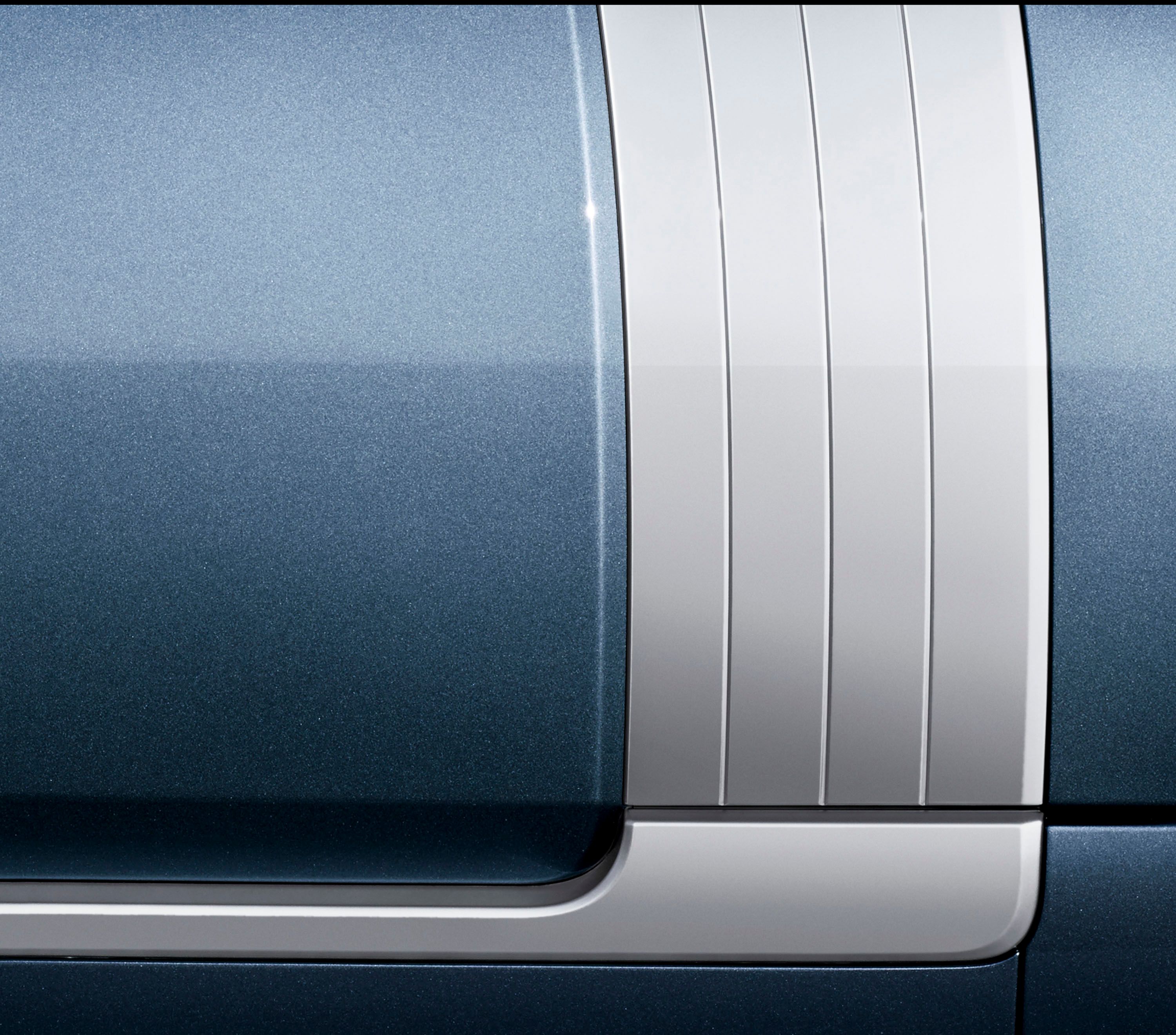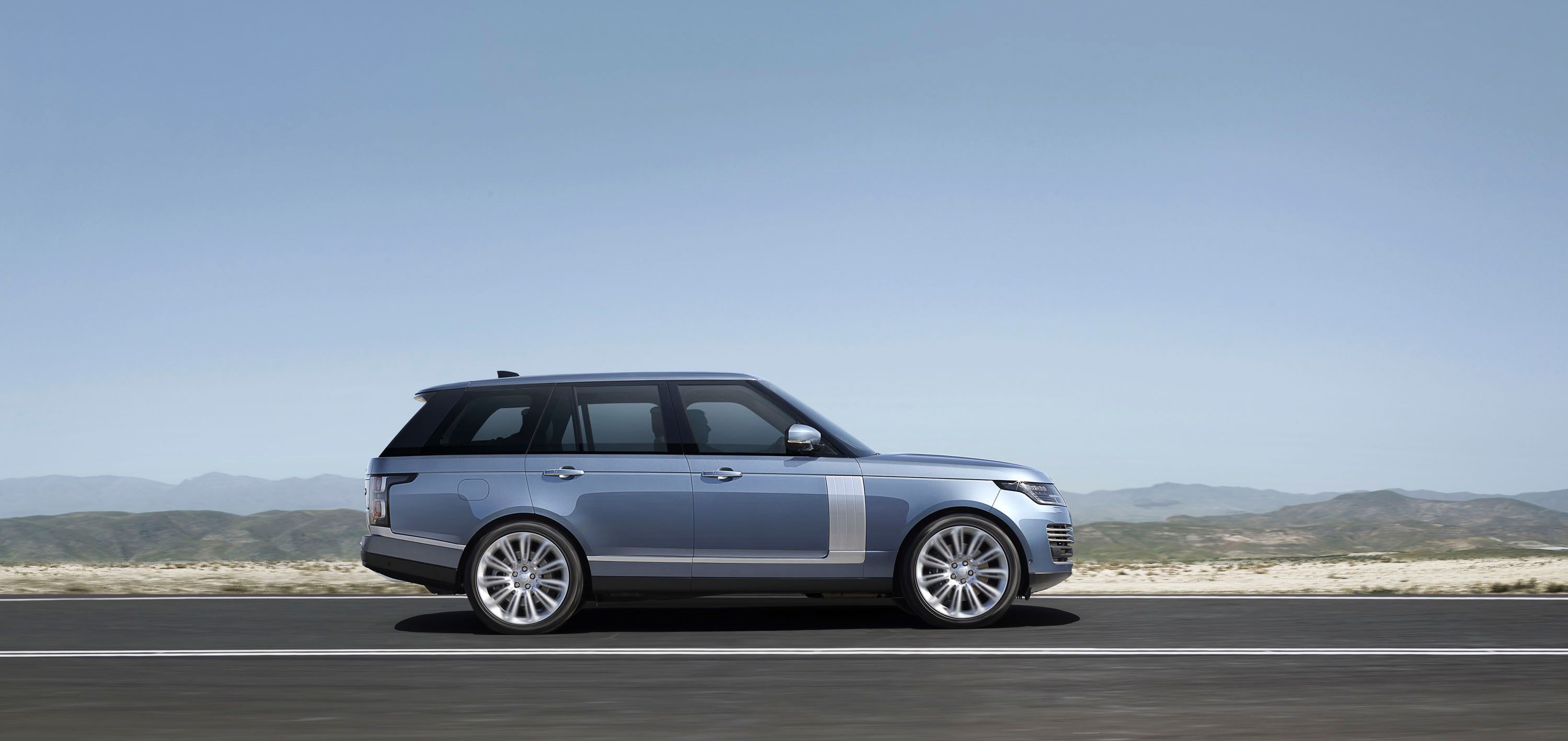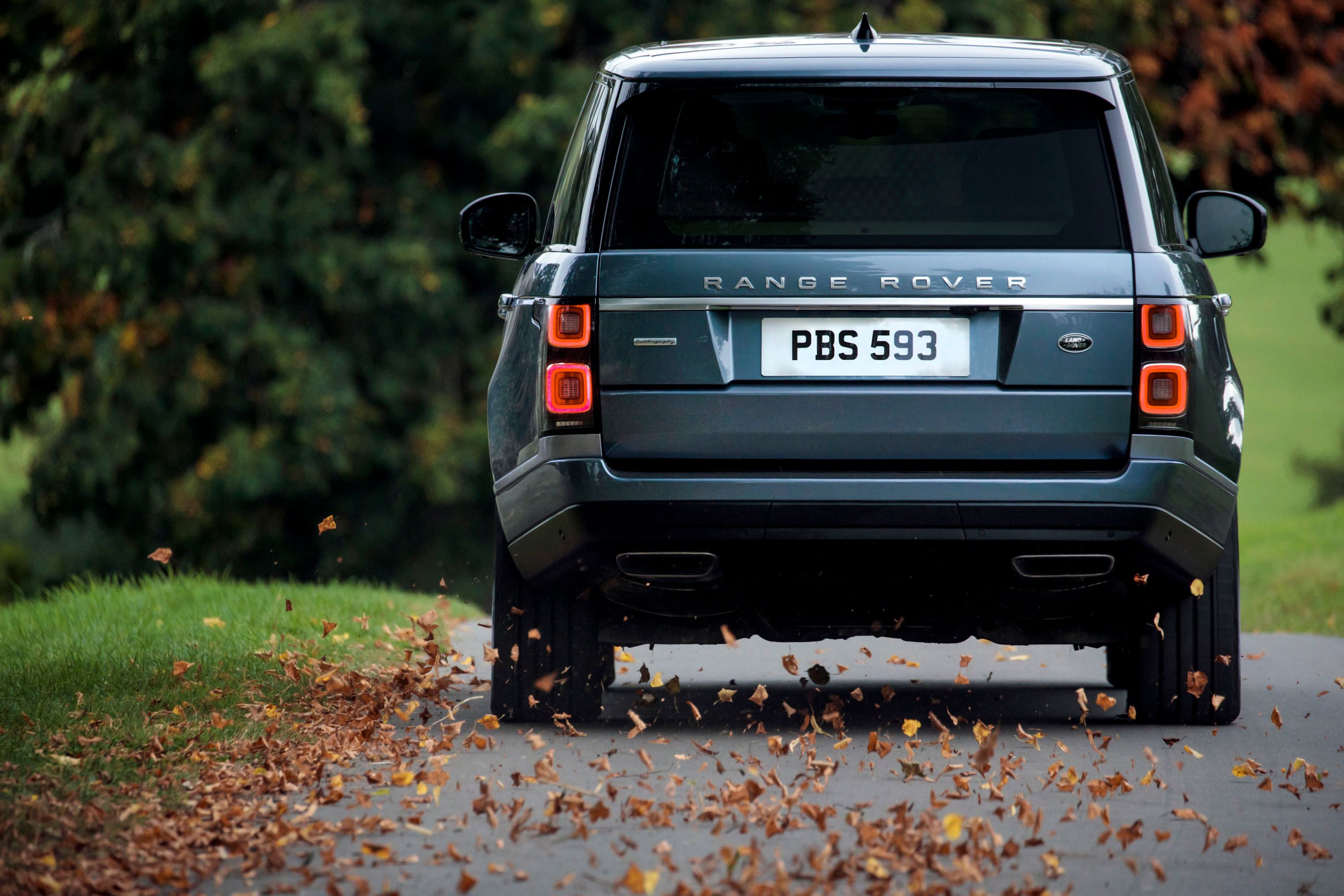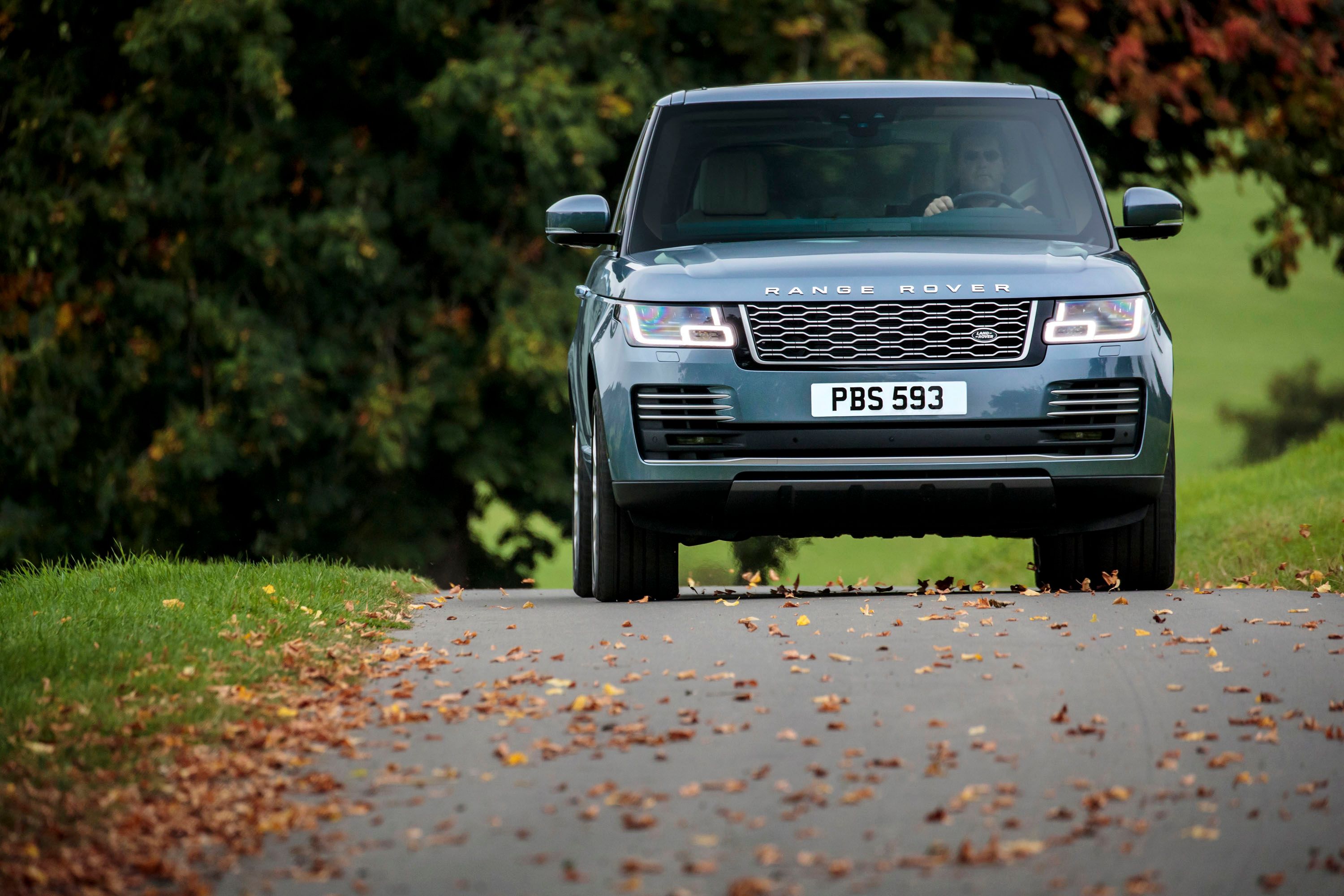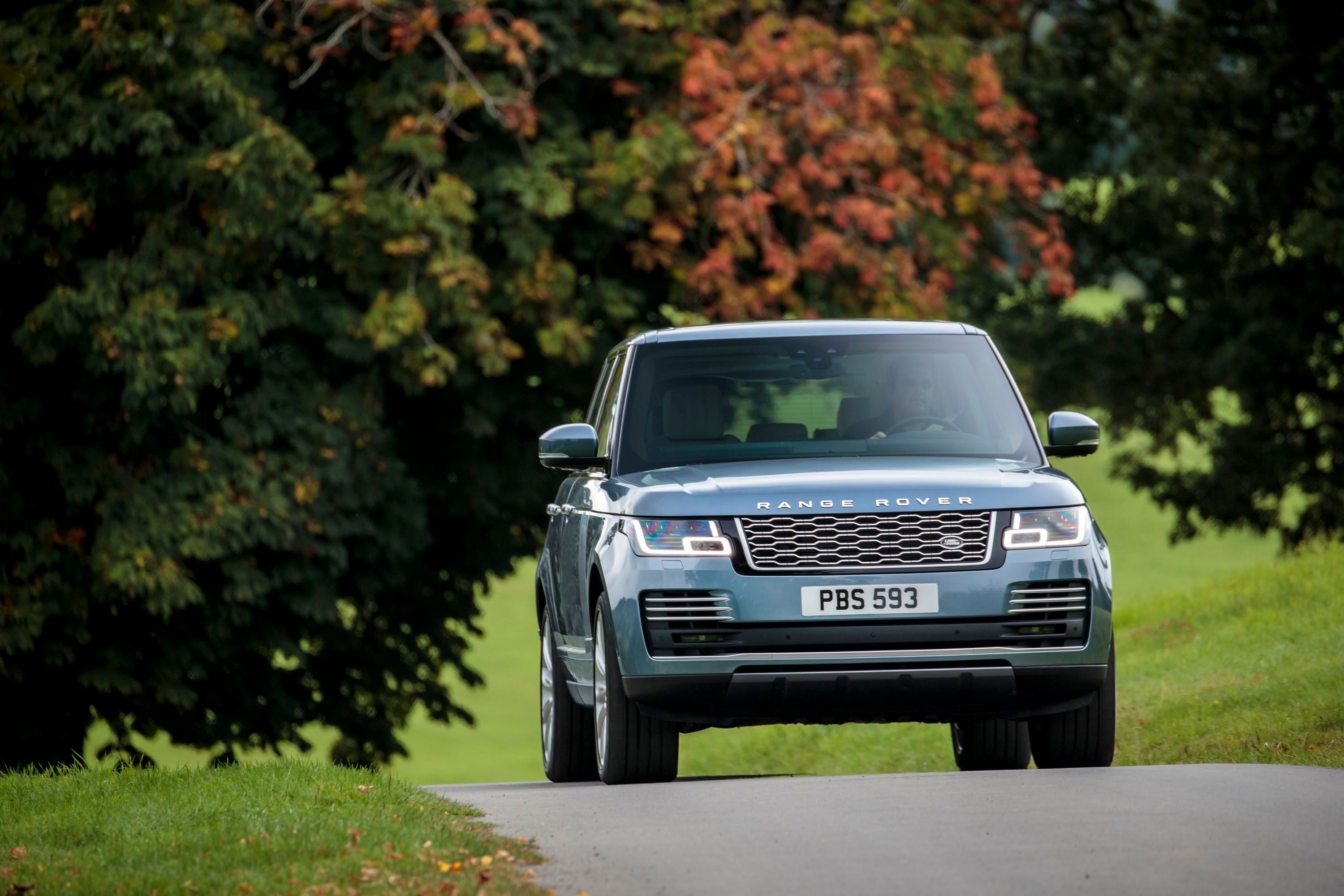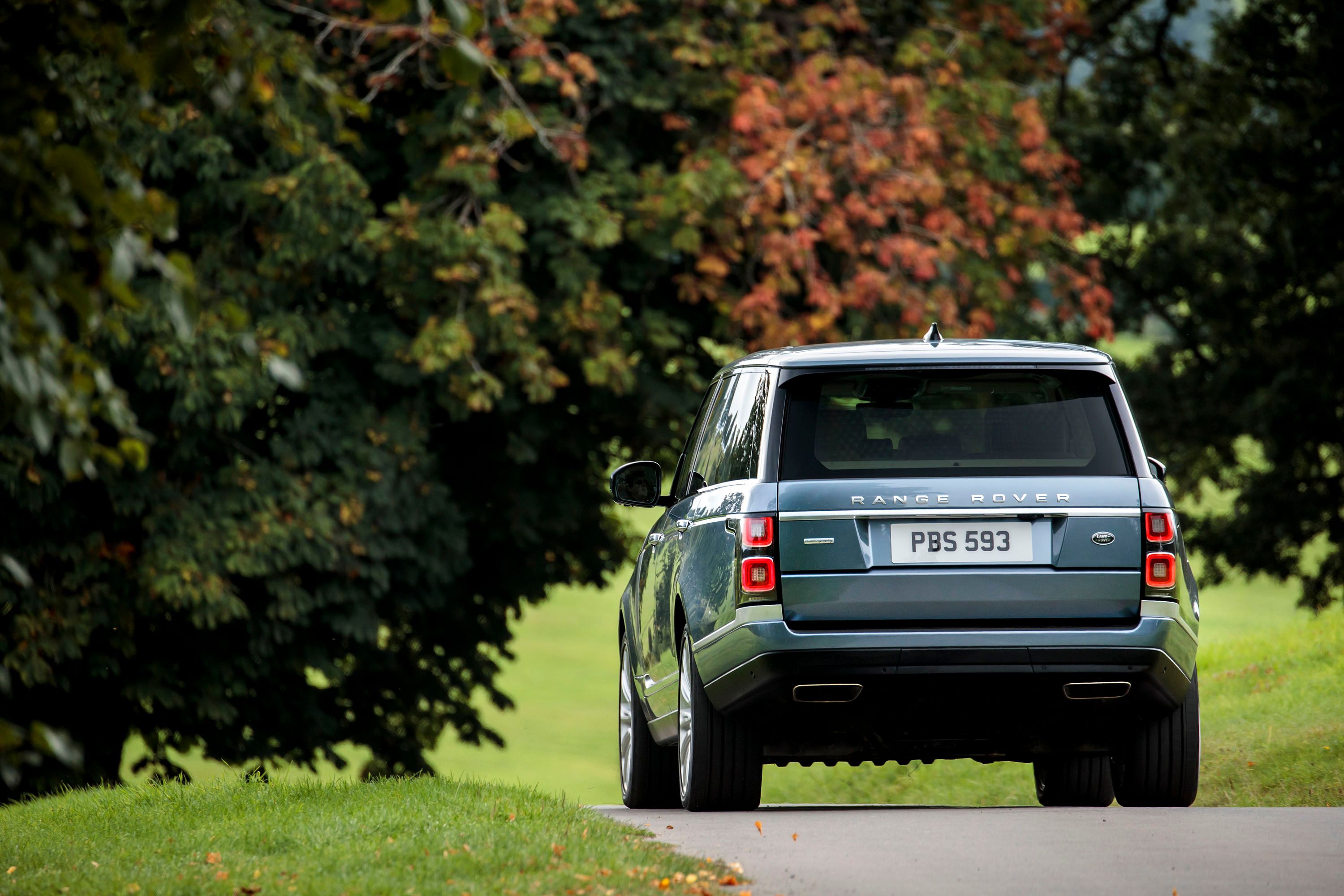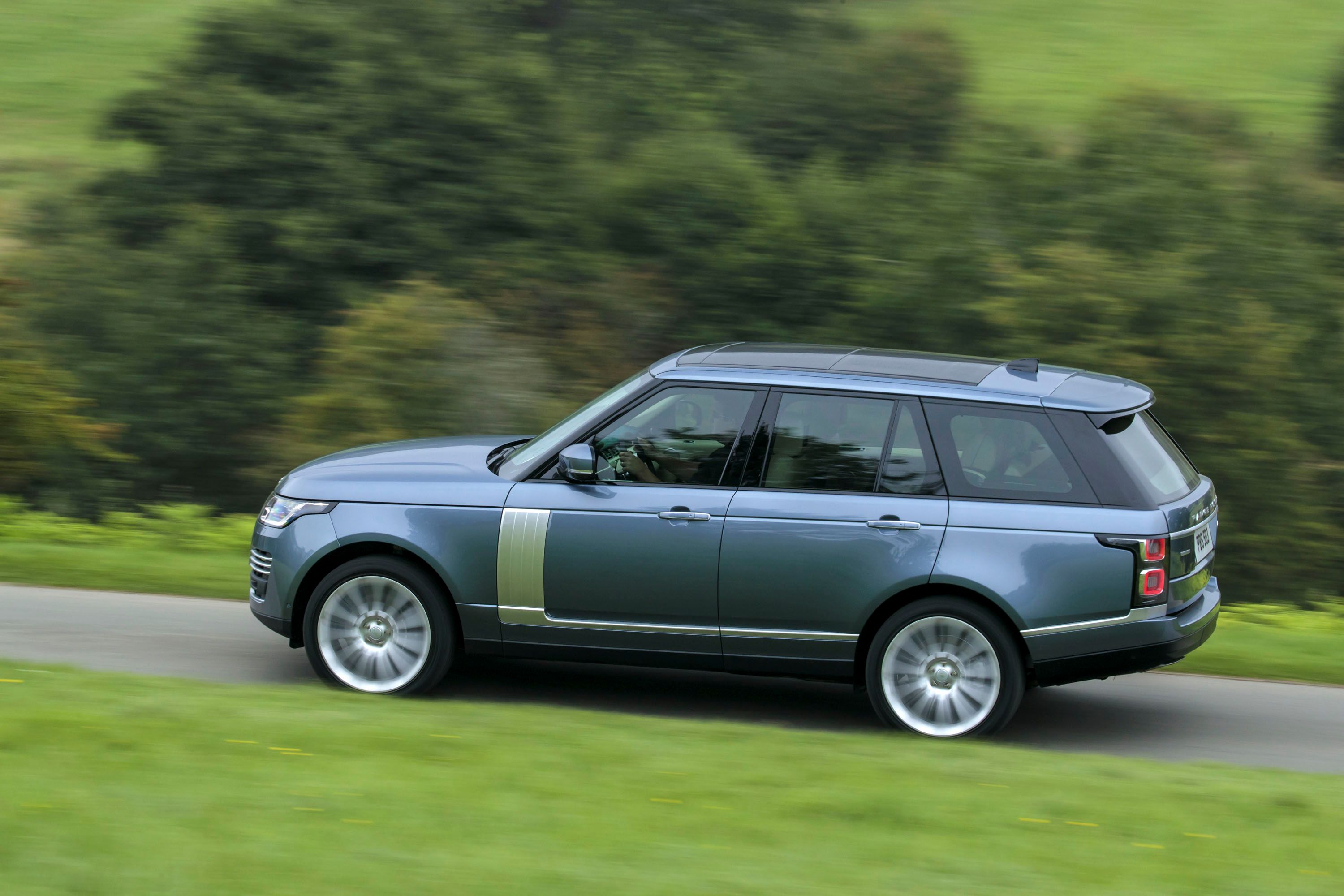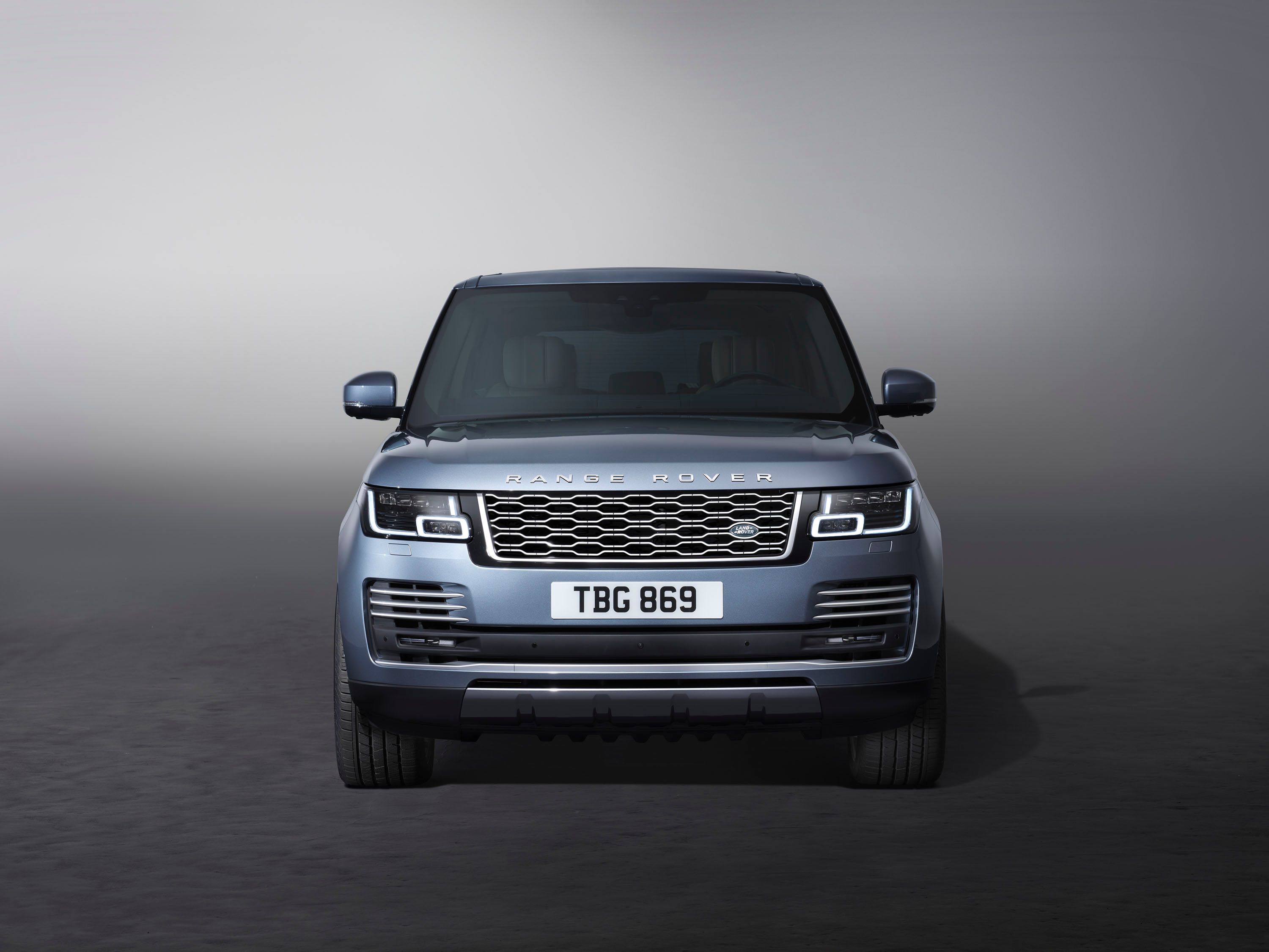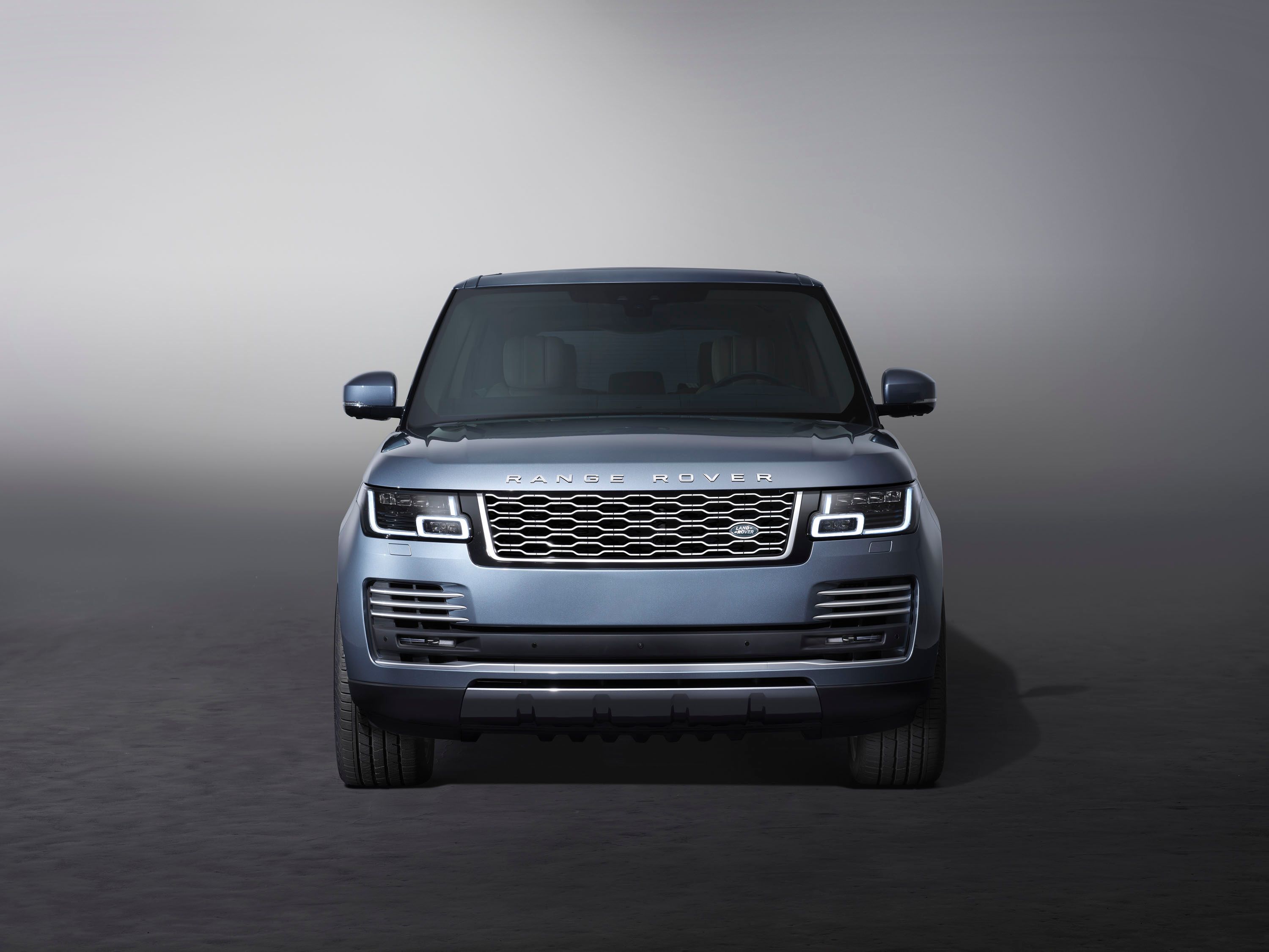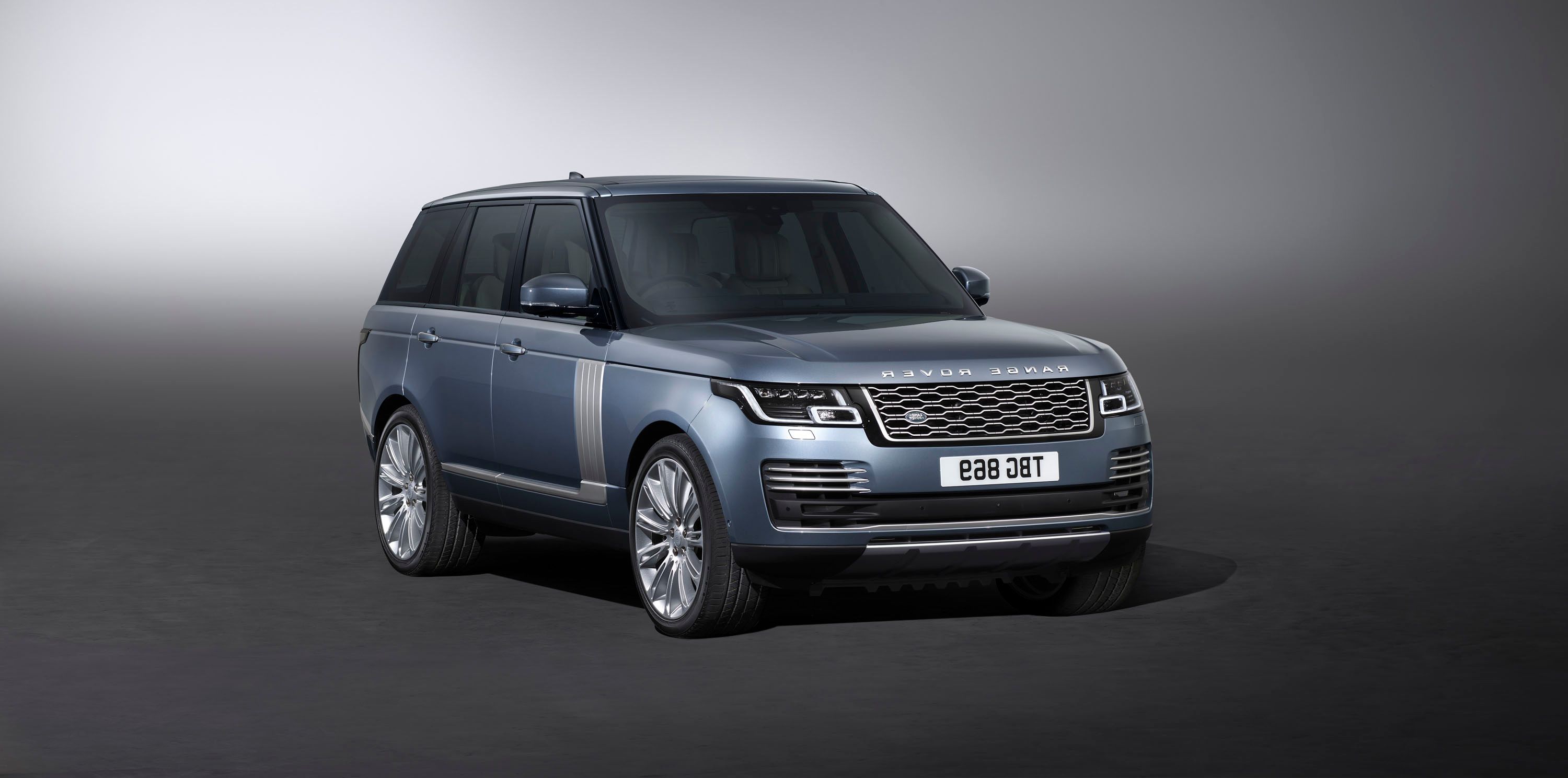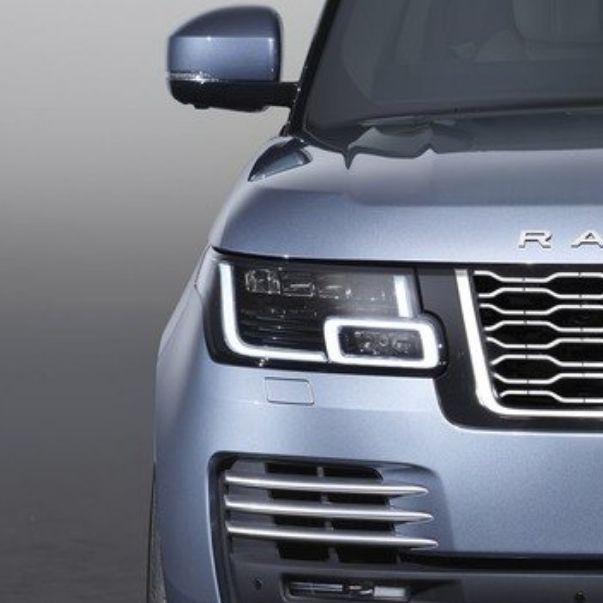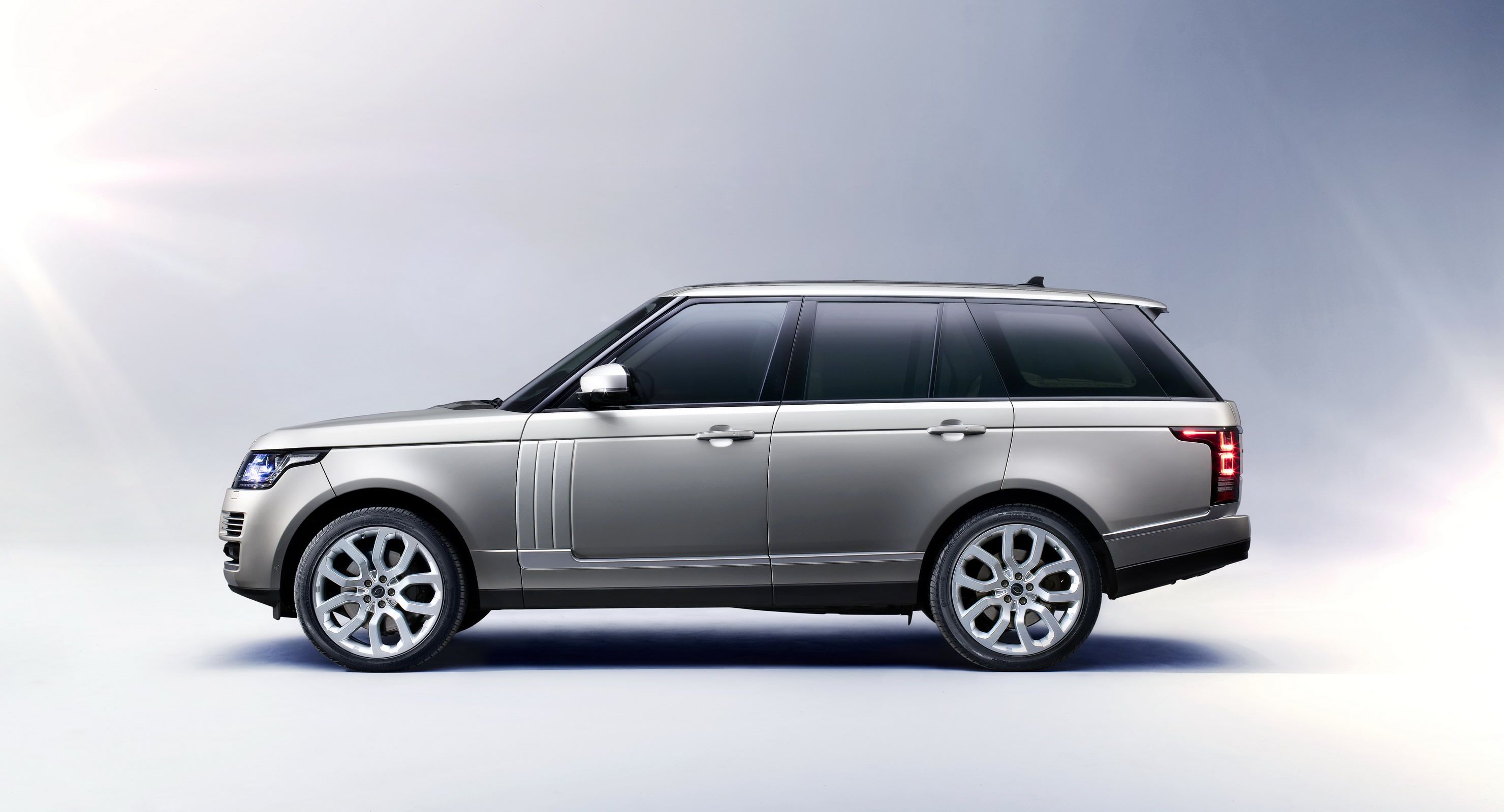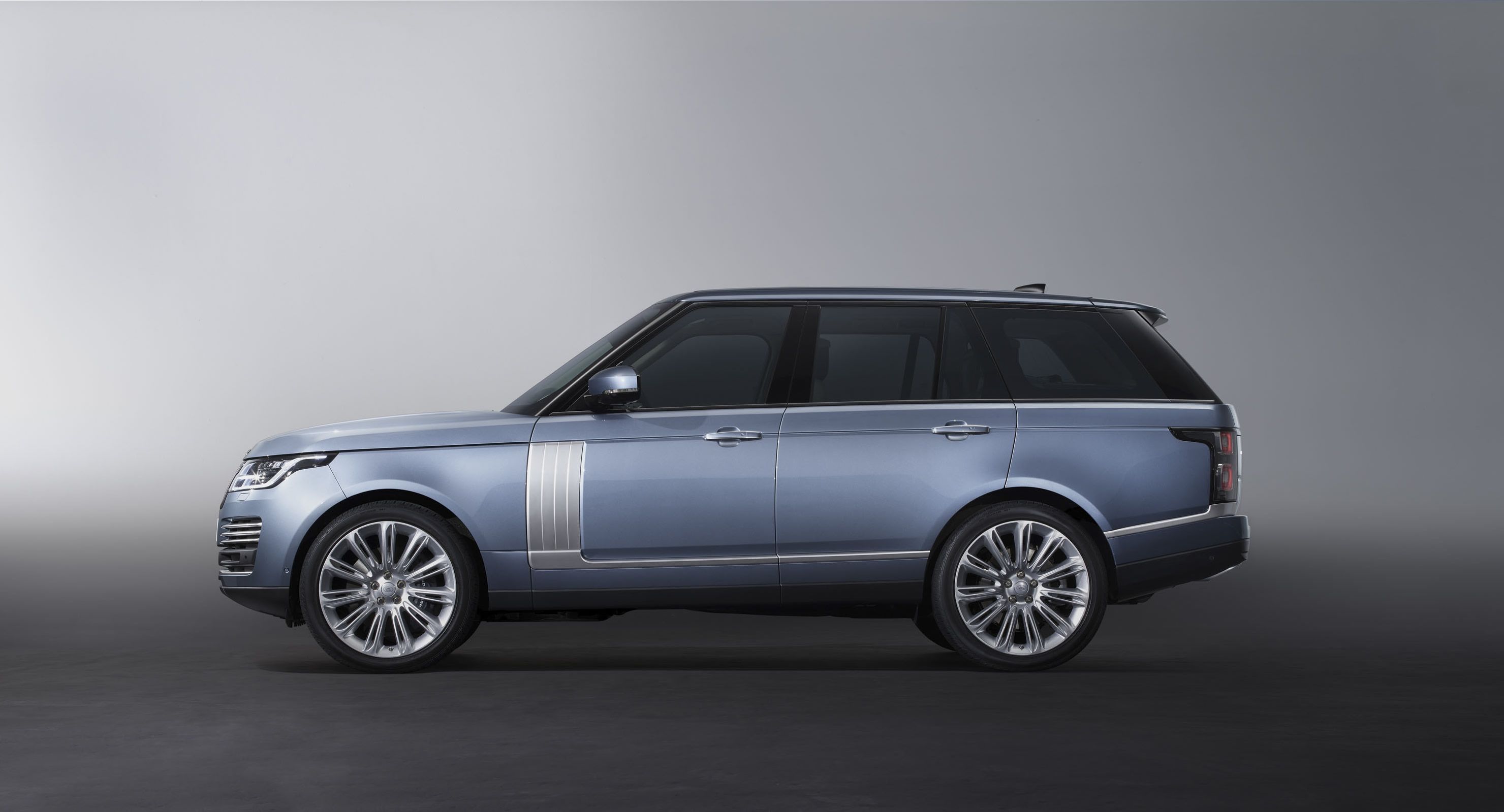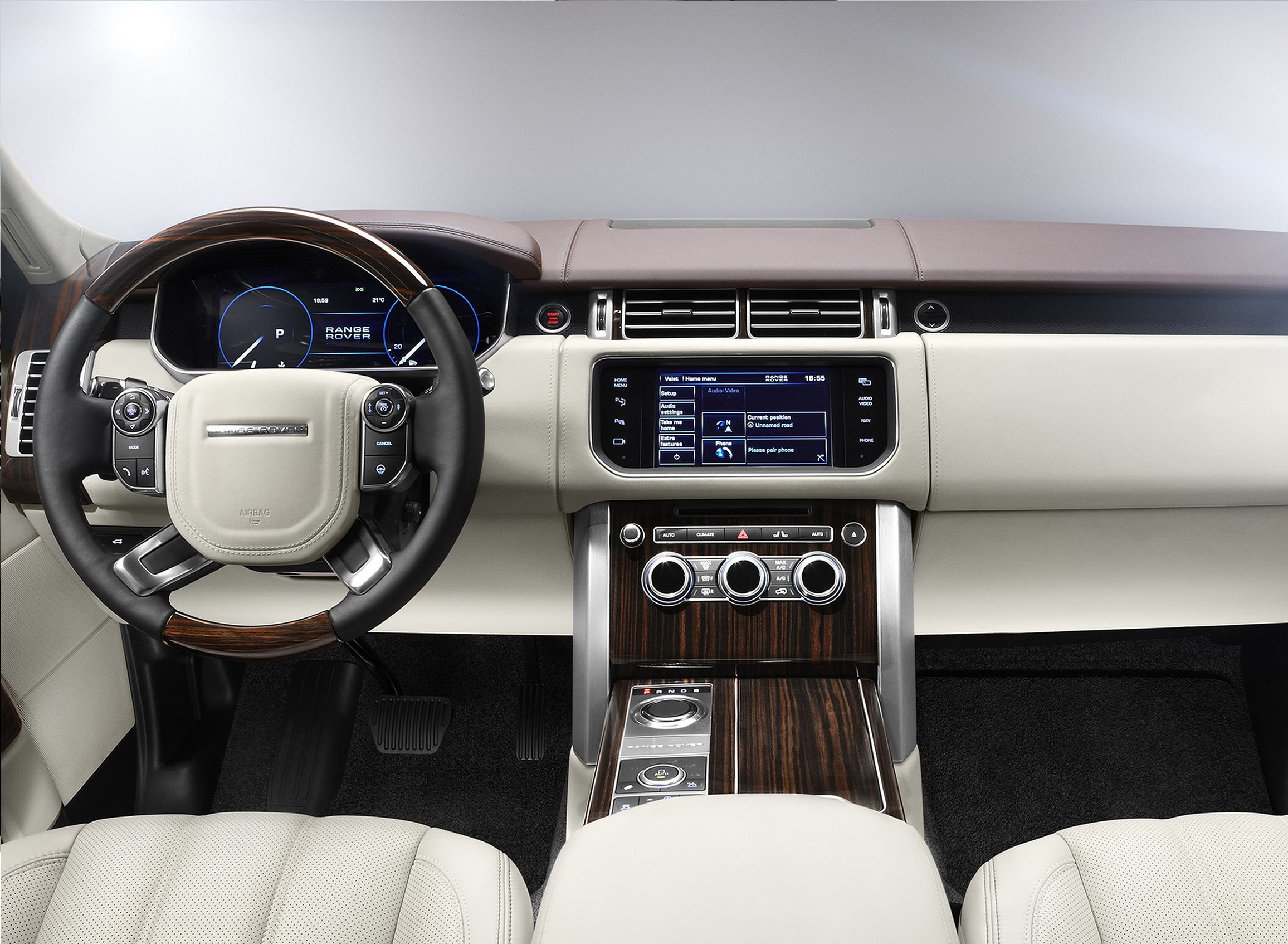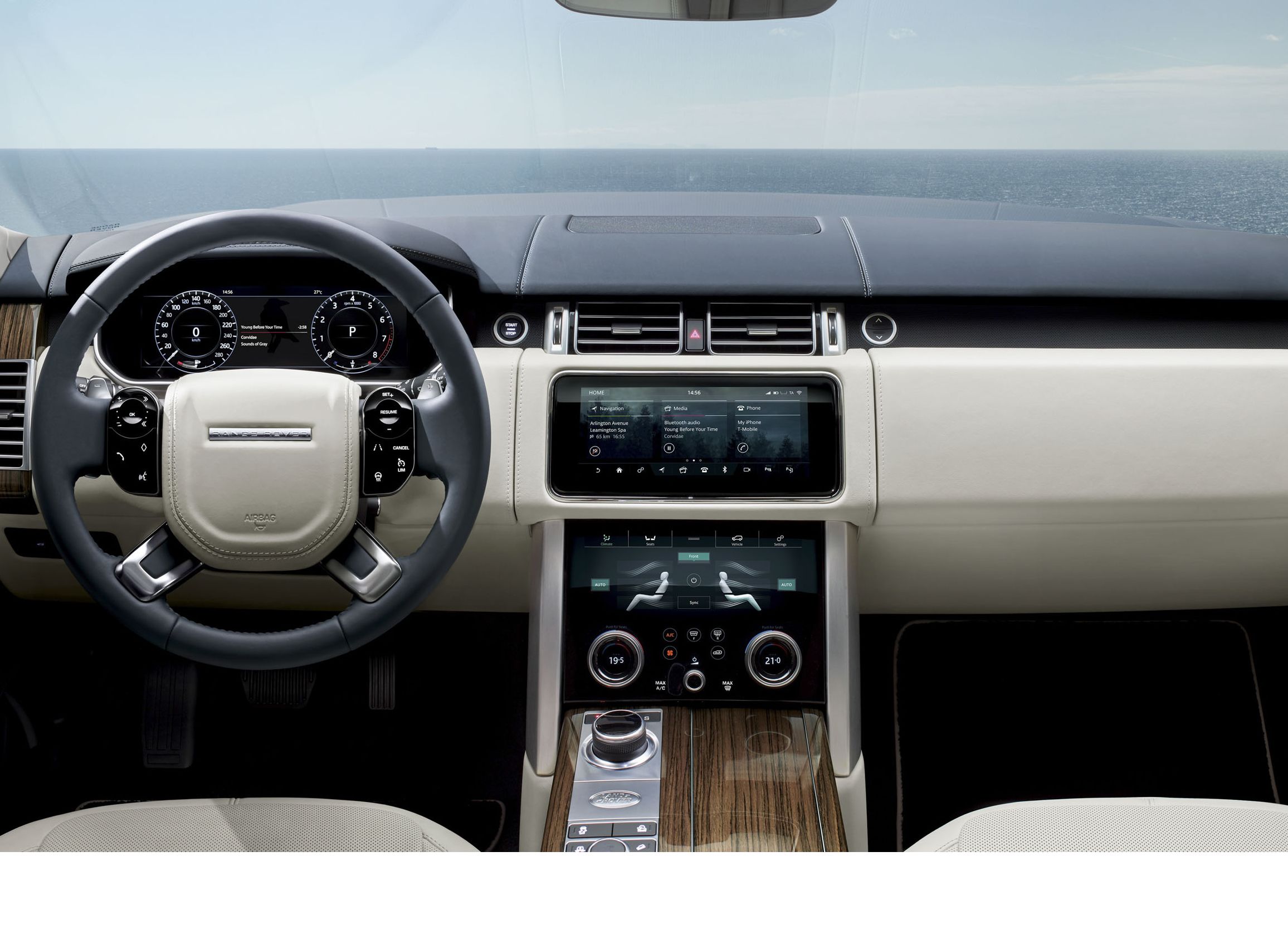The Range Rover is Jaguar Land Rover’s flagship SUV, offering surprising off-road capability wrapped up in a luxurious, premium package. The latest model year smartly keeps these basics intact, while also adding a dash of tweaked exterior styling, a heavy dose of the latest infotainment and driver assist tech, and most importantly, a brand-new plug-in-hybrid powertrain. If you prefer power rather than efficiency, a supercharged V-8 is on hand as well, as is a diesel option and a gas-powered V-6. Inside, the rear seat gets as much as 7.3 inches in extra legroom, which works wonders while relaxing in the high-end long-wheelbase iteration. Leather upholstery and wood trim pervade throughout. Read on for more.
Continue reading to learn more about the 2018 Land Rover Range Rover.
2018 Land Rover Range Rover
- Make: Array
- Model: 2018 Land Rover Range Rover
- Engine/Motor: V6
- Horsepower: 340
- [do not use] Vehicle Model: Array
Official video
Exterior
|
|
ids=738566,738567 |
no_overlay=true> |
Smartly, JLR didn’t make any dramatic changes to the highly successful Range Rover formula, and that includes the exterior styling. The same simplified design cues are present, with lots of straight lines and broad, flat surfaces. The details are made up of horizontal contours that add a sense of beefiness to the vehicle, a good complement to the squared-off, long-reaching rooflines and rear hatch.
“Our approach was to find ways of enhancing the Range Rover’s traditional appeal without making too dramatic a change,” says Gerry McGovern. “We therefore set out to create an uncluttered graphic that embodied a cleanliness and quality of design, with flush detailing and a greater emphasis on overall cohesion.”
Exterior equipment and styling upgrades vary between the various trim levels. For example, the high-powered SVAutobiography stands out thanks to the inclusion of a new mesh grille using a “Graphite Atlas” design with chrome inserts.
Meanwhile, all models in the range get an updated rear bumper with integrated exhaust tips, plus a reshaped front bumper with wider vent blades. Up top, you’ll find a new shape for the clamshell hood as well, which also gets longer dimensions than before.
In front, you’ll notice headlight housings that are more pointed and thinner than before, with LEDs used as the primary lighting element. In fact, each new Range Rover comes standard with 24 LEDs, which includes the signature daytime running lights. Options include a high-beam assist feature.
Moving to the flanks, we find new lower side elements that gain fresh accents and new vent graphics. Various hues offered include a Satin Body-Colored look and an Atlas Accent Finish. Six new designs for the alloy wheels are also on hand, which, depending on the trim level, get sizing up to 22 inches in diameter.
Two exterior colors were added to the lineup, now including Rossello Red and Byron Blue. Further exterior customization can be had with the optional design packs, the first of which is the Black Exterior Pack. Opt into this and you’ll get Narvik Black coloring for the lettering front and back, grille insert, front tow eye cover, side view mirror covers, side vent graphics, and more. There’s also the Shadow Exterior Package, which applies upgrades to the same areas, but in a Shadow Atlas color, rather than black.
Finally, the body panels were made from aluminum in order to keep weight down, resulting in a body that’s 39-percent lighter than before. The styling changes also affect how the SUV moves through the atmosphere, with the coefficient of drag reduced to 0.34.
Interior
|
|
ids=738568,738569 |
no_overlay=true> |
Step into the Range Rover’s cabin, and you’ll find even more space than what was offered before. This includes a redesign for the rear bench as well, where a substantial amount of legroom was added – up to 7.3 inches, bringing the grand total up to 47.5 inches of legroom total in long wheelbase variants. JLR even managed to accomplish this without putting a dent in the rear cargo room. The rear seats are wider as well, and they get a recline function. With one touch, the rear bench will fold flat to accommodate larger objects you might wanna move. A 60/40 split for the rear bench offers other cargo arrangement options, while smaller storage bins were added here and there.
As for the passengers, ambient road noise sees a decline thanks to 20-percent thicker glass. Rear-seated passengers will also enjoy the power-deployable center console, which enables easier ingress and egress for those climbing in and out. When deployed, the center console provides soft touch leather surfaces and additional storage. It’s all part of the Range Rover’s Rear Executive Seating feature, which essentially turns the SUV into a premium limo, especially when folding down the front passenger seat for ever more rear legroom.
Speaking of seats, there are 16-way adjustable units as standards, while options toss in either 20-way or 24-way adjustable units. Hard-button controls were added to the arm panels. The seat frames were made wider and now get deeper foam, plus there’s a heating function and cooling function. Heating can also be found on the armrests, feet rest, and calf rest. The seats also get 25 different massage programs and even eight different settings for the headrests. All of these various settings can be customized via the Range Rover smartphone app.
In terms of materials, expect copious leather upholstery, with grained leather as standard, plus oxford leather and semi-aniline leather as available options. There are also seven different options for interior veneers, four of which are new for this latest model year.
That’s all to be expected though, right? What about this technology JLR is boasting about?
Well, long story short, the new Range Rover gets the “most advanced infotainment system yet created by Jaguar Land Rover.” Providing the platform is an InControl Touch Pro Duo system with two 10-inch HD touchscreens in the center console, offering smartphone-esque operation (pinch, swipe, etc.) and a high degree of customizability for whatever features you need to control.
Providing the instrumentation is a 12-inch Interactive Driver Display, plus a heads-up display that projects info onto the windshield. In back is an optional 10-inch display.
Expect the usual array of app support, plus a 4G Wi-Fi connection for up to eight devices. There are also 17 connection points, with normal power sockets, USB connections, HDMI ports, and 12-volt sockets.
Meridian provides the audio equipment. Standard spec is a 13-speaker system with 380 watts, 19 speakers with 825 watts, and 29 speakers with 1,700 watts. Each options includes a dual-channel subwoofer.
Further technology upgrades include a full suite of safety and driver’s assists. Kicking it off is stuff like adaptive cruise control, traffic sign recognition, lane departure warning, emergency braking, and more. Even more can be had with the optional Drive Pack, which adds a Blind Spot Monitor, Adaptive Speed Limiter, and a Driver Condition Monitor, among others. There’s also a Park Pack that adds a 360-degree parking aid, Reverse Traffic Monitor, Clear Exit Monitor, and other things.
More luxury-oriented options include a cooler box and refrigerator in the center console capable of holding four 16.9-ounce bottles. There’s also a new cabin air ionization system, plus LED ambient lighting divided into three distinct “zones” in 10 different colors.
Finally, passengers will enjoy the gesture control for the sunblind – just swipe your hand in front of the rearview mirror to open or close the blinds, although normal button operation is also in place if desired. A smart function will automatically close the blinds after passengers get out, keeping the cabin cool in hot, sunny climates.
Drivetrain
Let’s kick off this section with the range-topping Range Rover SVAutobiography Dynamic, offered as the most powerful Range Rover model ever made. Equipped with the same all-aluminum supercharged V-8 as the Range Rover Sport SVR, peak output is rated at 557 horsepower, which is enough to propel the large SUV to 60 mph in just 5.1 seconds.
That said, one of the most important headlines with this latest update is the addition of a new PHEV (plug-in hybrid electric vehicle) powertrain. This latest electrified Land Rover makes solid progress towards Land Rover’s goal to offer an electric powertrain option with every new model released after 2020.
Dubbed the Range Rover P400e, the hybrid starts with a 2.0-liter Ingenium four-cylinder internal combustion engine making 296 horsepower. It then adds a single electric motor making 114 horsepower. The ICE is mounted longitudinally under the hood, while the electric motor is placed inside the ZF eight-speed automatic transmission. Total output for the hybrid system is rated at 398 horsepower and a stout 472 pound-feet of torque. With output reaching the pavement through a permanent 4WD system, acceleration from 0-to-60 mph takes 6.4 seconds for short-wheelbase variants, while top speed is pegged at 137 mph. What’s more, the eight-speed gearbox is adaptive, changing its shifting patterns to better suit your particular driving style. For example, if you like driving with bit more enthusiasm, the gear changes will compensate with quicker cog swaps.
Mounted under the floor in the rear of the vehicle is a 13.1-kWh lithium-ion battery. Charging it up is a 7-kW charger, connected via a charge point placed just behind the grille. Plugged into a standard household outlet, JLR says a full charge can be achieved “overnight.” There’s also an included public charger cable, and the option for pulling power from the grid during off-peak hours. The current charge status is indicated via light strips placed next to the socket behind the grille. Buyers can also monitor the charge status via the Range Rover smartphone app.
As you probably expect, there are multiple driving modes to suit the conditions at hand. The first of these is the default Parallel Hybrid mode, which kicks in both the gas and electric power sources. Then there’s the SAVE function, which maintains a specific battery charge based on your stated destination and onboard GPS navigation data, creating a smart efficiency plan to make the most of the available energy, maximizing mpg as a result. For example, the system will save electric power to help navigate through stop-and-go traffic.
Then of course there’s the EV mode, which draws motivation exclusively from the battery pack. Top speed while in all-electric mode goes down to 85 mph, while max range before the ICE kicks in is 31 miles.
Drivers can select their preferred mode via a button on the console. Regenerative braking also helps to keep the battery pack at full.
In addition to a supercharged V-8 and hybrid four-cylinder, the Range Rover is also offered with a few powerplants to fill the gap, including a diesel option that makes 254 horsepower from a turbocharged V-6, returning 28 mpg on the highway. Finally, there’s a supercharged 3.0-liter V-6 in two states of tune, either with 340 horsepower or 380 horsepower.
Chassis And Handling
In addition to providing more economic driving options, the new electric powerplant provides the Range Rover with enhanced off-roading chops as well. It uses something called the Land Rover Terrain Response system, which will precisely distribute the available 0 rpm torque from the electric motor across all four corners, enhancing traction as a result.
Further grip is provided by the low-traction launch mode, which is ideal for surfaces like wet grass, gravel, or snow. Hill Descent Control comes as standard. There’s also plenty of ground clearance and a smooth underfloor, and if necessary, Land Rover says the Range Rover can wade into water up to 35.4 inches (nearly 3 feet) deep.
Further improvements to the new model include an optimized chassis thanks to improved stiffness, plus a refined variable-ratio, speed-sensitive steering system. The construction utilizes aluminum for the construction, which keeps it as lightweight as possible. The set-up is independent at all four corners, with double wishbones in front and a multi-link in the rear.
The Range Rover comes standard with air suspension components, which allows it to automatically lower or raise the ride height by as much as 3.5 inches. This is particularly useful when adapting to certain driving situations, for example, lowering for high-speed freeway cruising, or rising up for off-roading adventures. Max ride height is also great for hitching up to a tall trailer. Further towing capabilities are provided by optional Advanced Tow Assist, which will automatically countersteer as necessary to guide the trailer where intended.
A Dynamic Response system allows drivers to fine tune their suspension set-up, with independent front and rear axle control and an active roll system. An active rear-locking differential and Adaptive Dynamics system with variable damping rounds out the handling equipment.
Various drive modes make the most of it. There’s a Comfort mode for cruising, as well as a Dynamic mode for spirited driving, plus modes like Grass/Gravel/Snow, Mud/Ruts, Sand, or Rock Crawl. There’s even an Eco mode, which will provide feedback and tips for eking out more mpg, while also softening the throttle response, short shifting the transmission, and deactivating the heating function for the side view mirrors, steering wheel, and seats.
Finally, ducts in the front bumper help to keep the brakes nice and chilly.
Prices
Order books for the Land Rover Range Rover are open now, with deliveries scheduled for the end of 2017, depending on the market in question. Meanwhile, buyers interested in the Range Rover P400e won’t get availability until the 2019 model year.
Pricing for the base model SE starts at $87,350, while the turbodiesel option will run you $89,350. Step up to the V-8 and you’re looking at $104,850, while the range-topper SVAutobiography gets a price tag of $177,200. Go for the long wheelbase iteration and prepare to dish out $207,900.
Land Rover declined to announce pricing for the P400e, but if we were to guess, a figure of $95,000 feels about right.
|
TRIM |
POWERTRAIN - OUTPUT |
MSRP |
|
SE |
3.0L S/C V6 Gas – 340hp |
$87,350 |
|
HSE |
3.0L S/C V6 Gas – 380hp |
$94,050 |
|
SE Td6 |
3.0L T/C V6 Diesel – 254hp |
$89,350 |
|
HSE Td6 |
3.0L T/C V6 Diesel – 254hp |
$96,050 |
|
Supercharged |
5.0L S/C V8 Gas – 518hp |
$104,850 |
|
Supercharged LWB |
5.0L S/C V8 Gas – 518hp |
$108,895 |
|
Autobiography |
5.0L S/C V8 Gas – 518hp |
$141,995 |
|
Autobiography LWB |
5.0L S/C V8 Gas – 518hp |
$148,295 |
|
SVAutobiography Dynamic |
5.0L S/C V8 Gas – 557hp |
$177,200 |
Other Options
Lexus LX
When it comes to boldly styled luxury SUVs, the Japanese-brand Lexus makes a tempting offer with its LX model line. Introduced for a third generation in 2007, the last refresh was shown at the 2015 Pebble Beach Concours d’Elegance. Outside, the LX advertises itself with an utterly unique exterior. The look is quite different from that of the Range Rover, with sharp cuts, many geometric forms, and highly angular features. Chrome lines the surrounds for the grille and windows, while the proportions are classic SUV in their appearance.
Mercedes-Benz GLS Class
If you’re looking for high-end luxury in a big SUV package, the Germans definitely have the right stuff. Mercedes-Benz offers the GLS Class to scratch that particular itch, available in three individual trim levels. Kicking it off is the GLS 450, which gets 362 horsepower and 369 pound-feet of torque from a turbocharged 3.0-liter V-6. Next is the GLS 550, which throws in another two cylinders and 1.7 liters for 449 horsepower and 516 pound-feet of torque. At the top of the heap is the AMG GLS 63, which mounts a 5.5-liter V-6 good for 577 horsepower and 561 pound-feet of torque. Pricing starts at $69,550 for the 450, and ranges up to $125,300 for the AMG.
Read our full review on the 2017 Mercedes-Benz GLS Class.
Volvo XC90 T8 Hybrid
Volvo has been making significant moves in the hybrid space as of late, with the XC90 T8 SUV offering both high-end interior luxury and powerful (yet fuel-efficient) technology under the hood. Big screens, leather upholstery, and wood trim are in the cabin, complemented by the latest safety and assistance features. A twin-charged 2.0-liter four-cylinder is mounted in the nose. Assisting the ICE is a pair of electric motors, which boost output to 400 horsepower. At the same time, return figures are estimated at an impressive 53 MPGe in the city.
Read our full review on the 2017 Volvo XC90 T8 Hybrid.
Conclusion
I’ll be perfectly honest, no one is gonna buy a $95,000 luxury SUV to save on gas, even if it does get a hybrid powertrain under the hood. Rather, the electrification of the Range Rover is a clear indicator that Land Rover is expecting some pretty big changes in the future, and when they happen, the automaker will have the experience needed to continue offering its most iconic model.
That said, the rest of the Range Rover line looks as good as always. The interior luxury and features are all top-notch, whether you’re behind the wheel or in the back seat relaxing. Premium SUV motoring is very much in effect here, and by all accounts, the off-roading chops are as strong as ever. It’s a solid foot forward for the nameplate, and we expect it to carry the JLR torch for quite some time to come.
References
Land Rover Range Rover
Read our full article on the 2018 Land Rover Range Rover P400e.
Read our full article on the 2018 Land Rover Range Rover Sport P400e.

